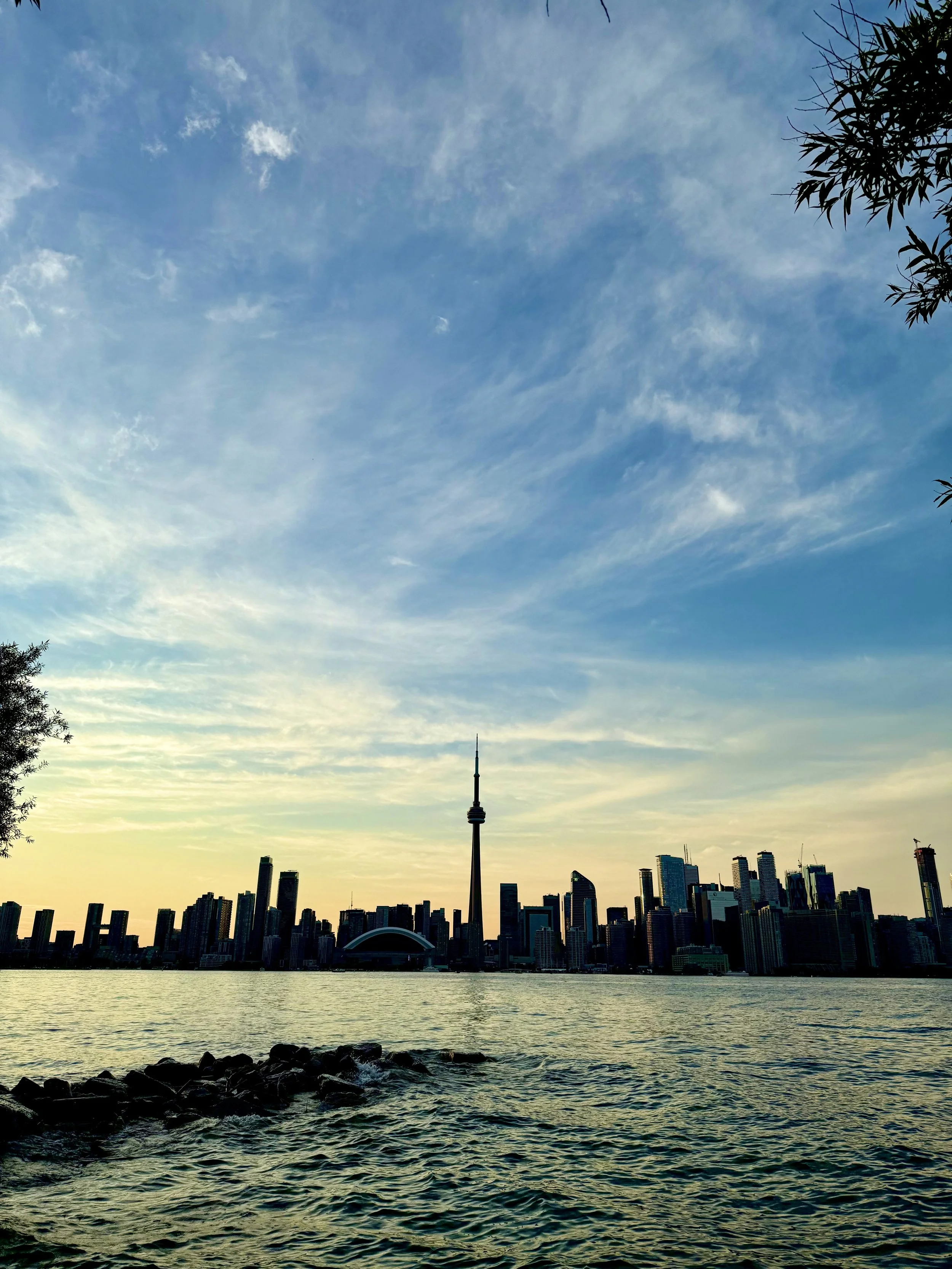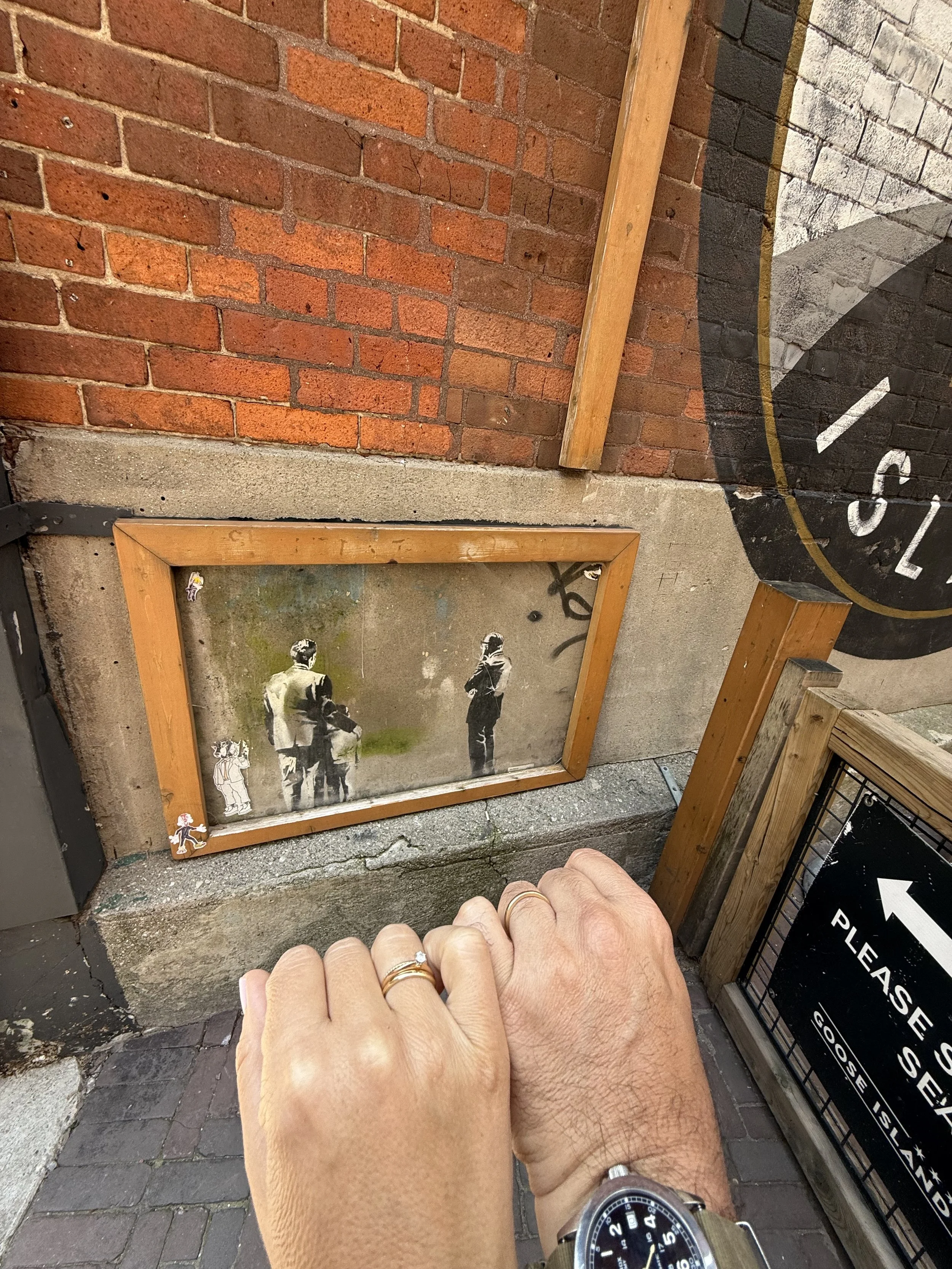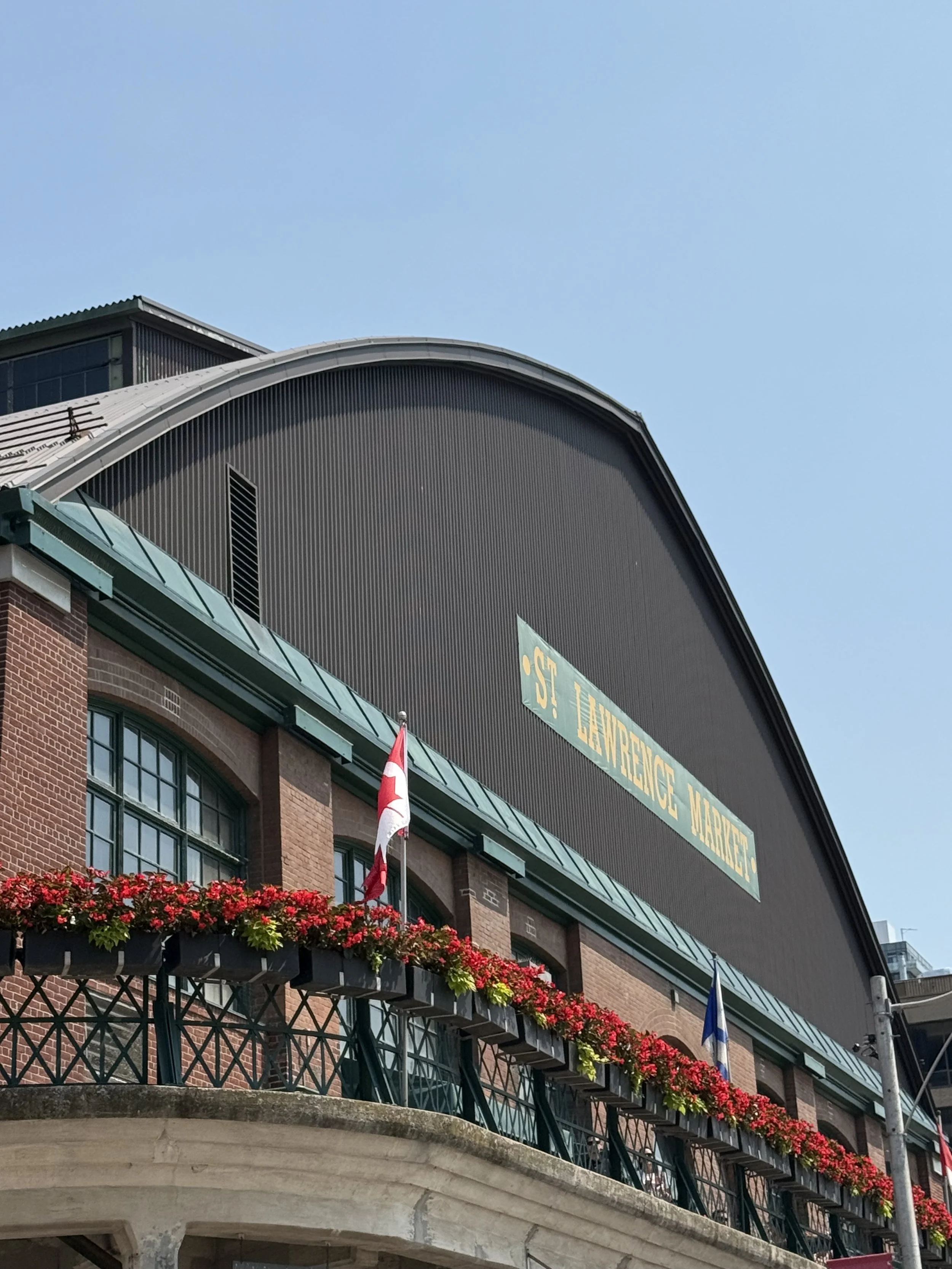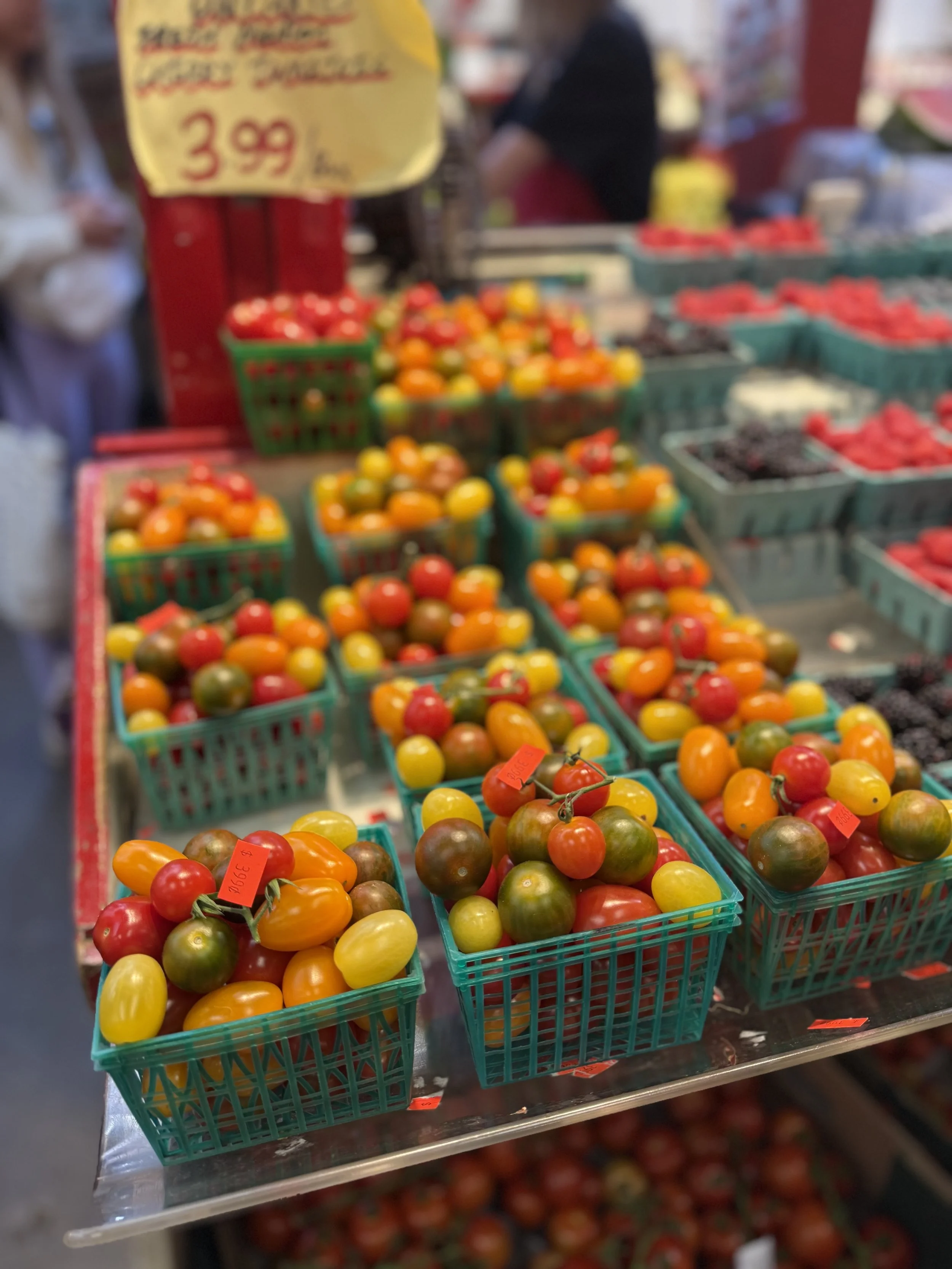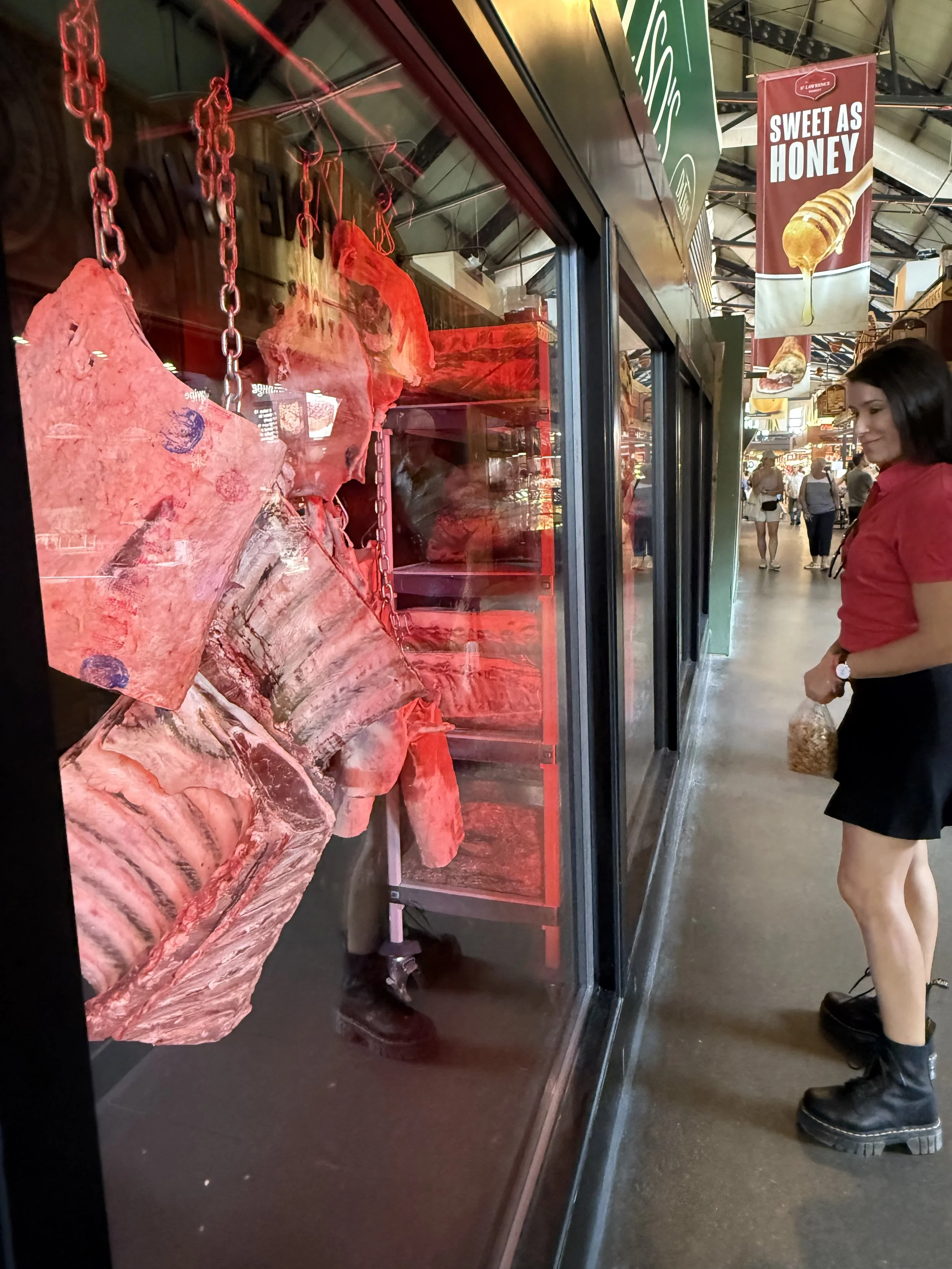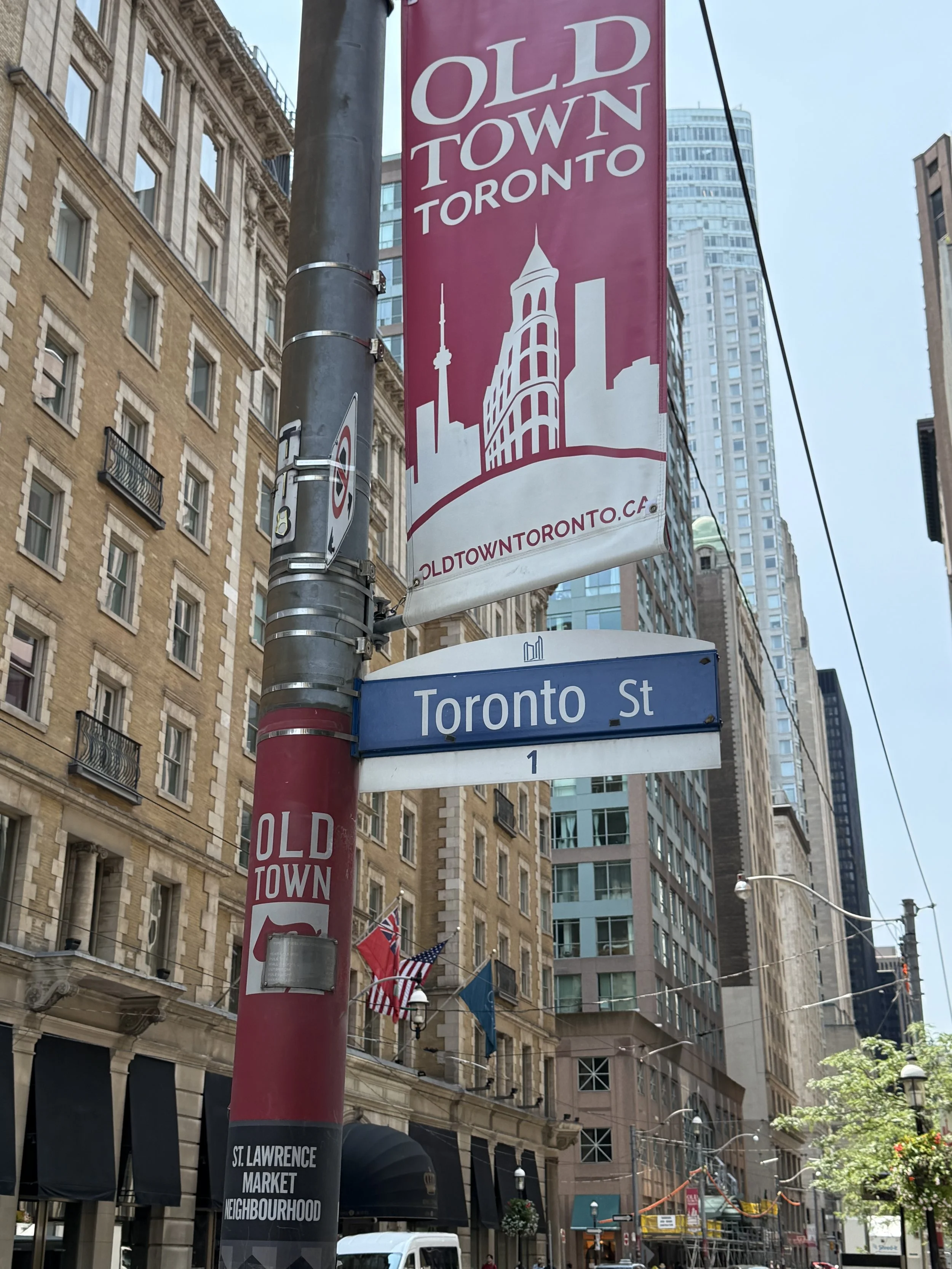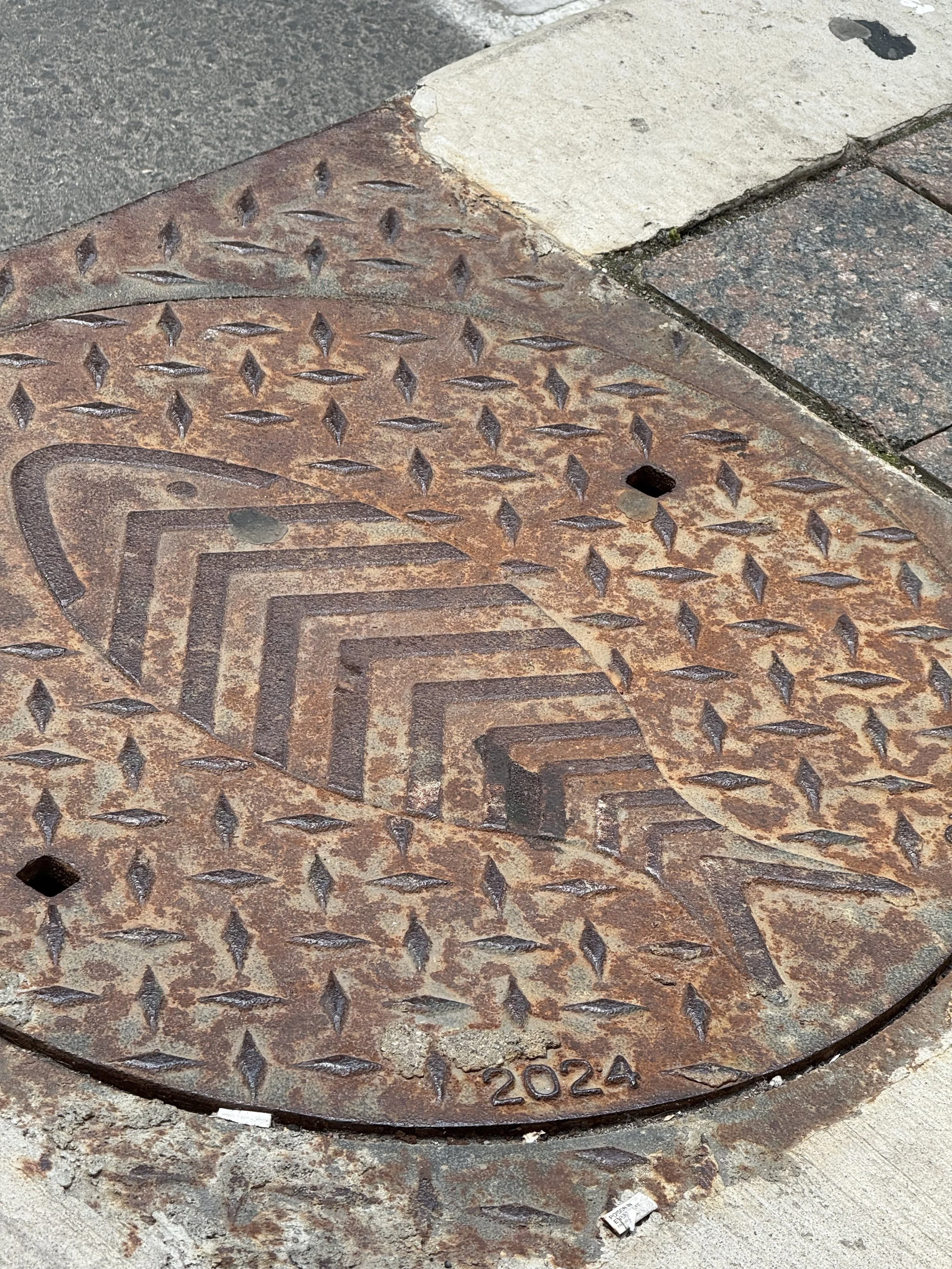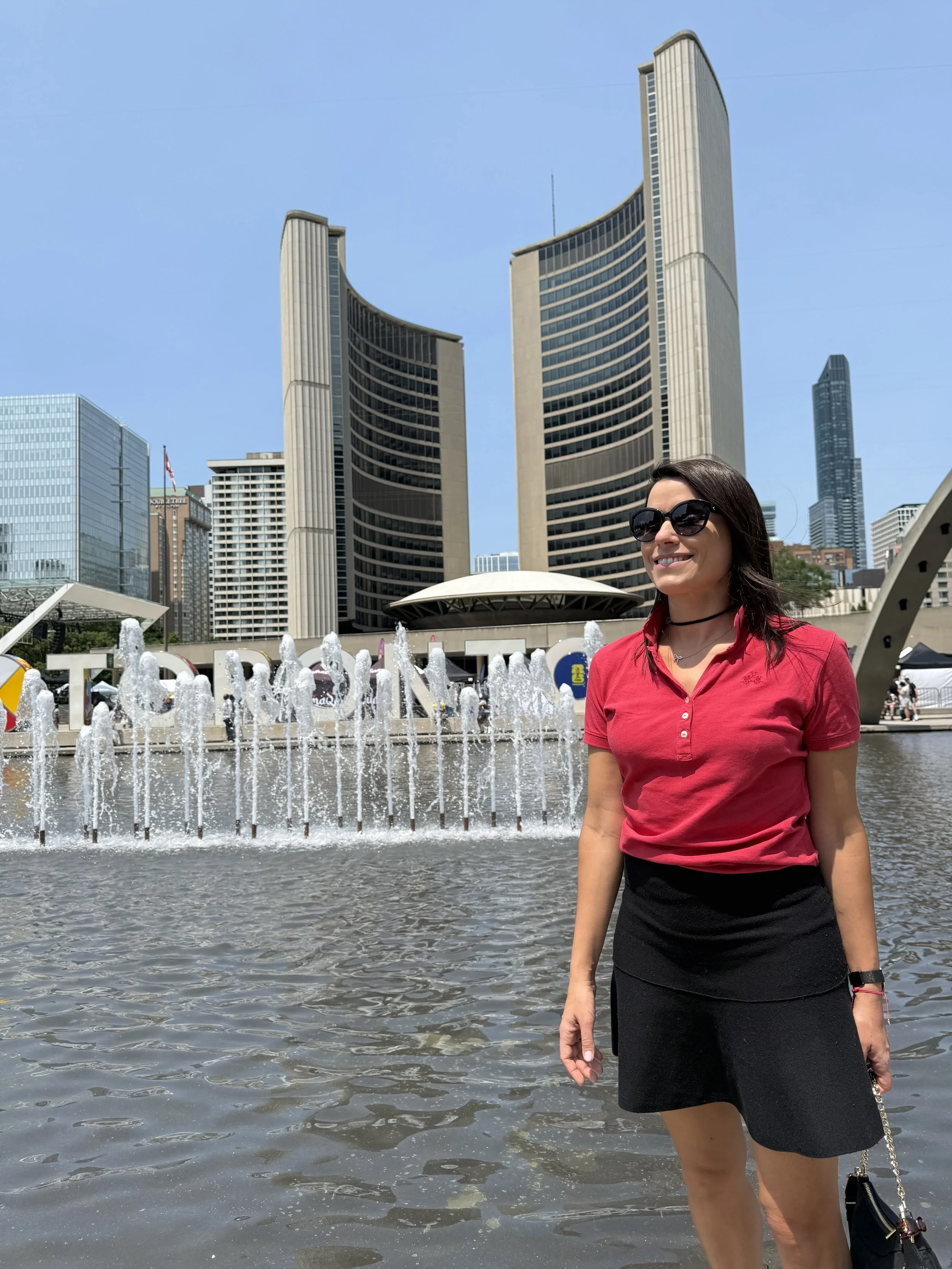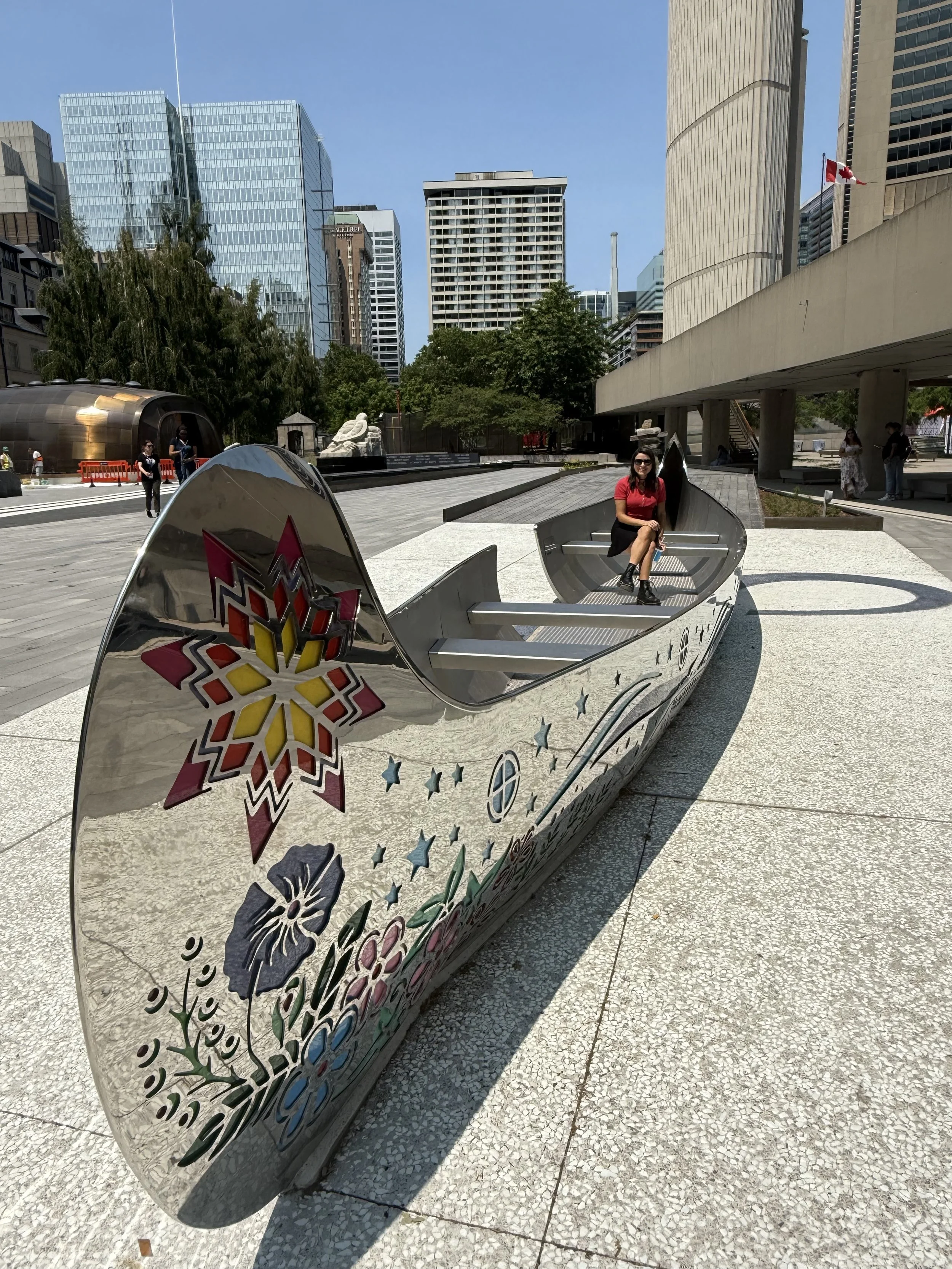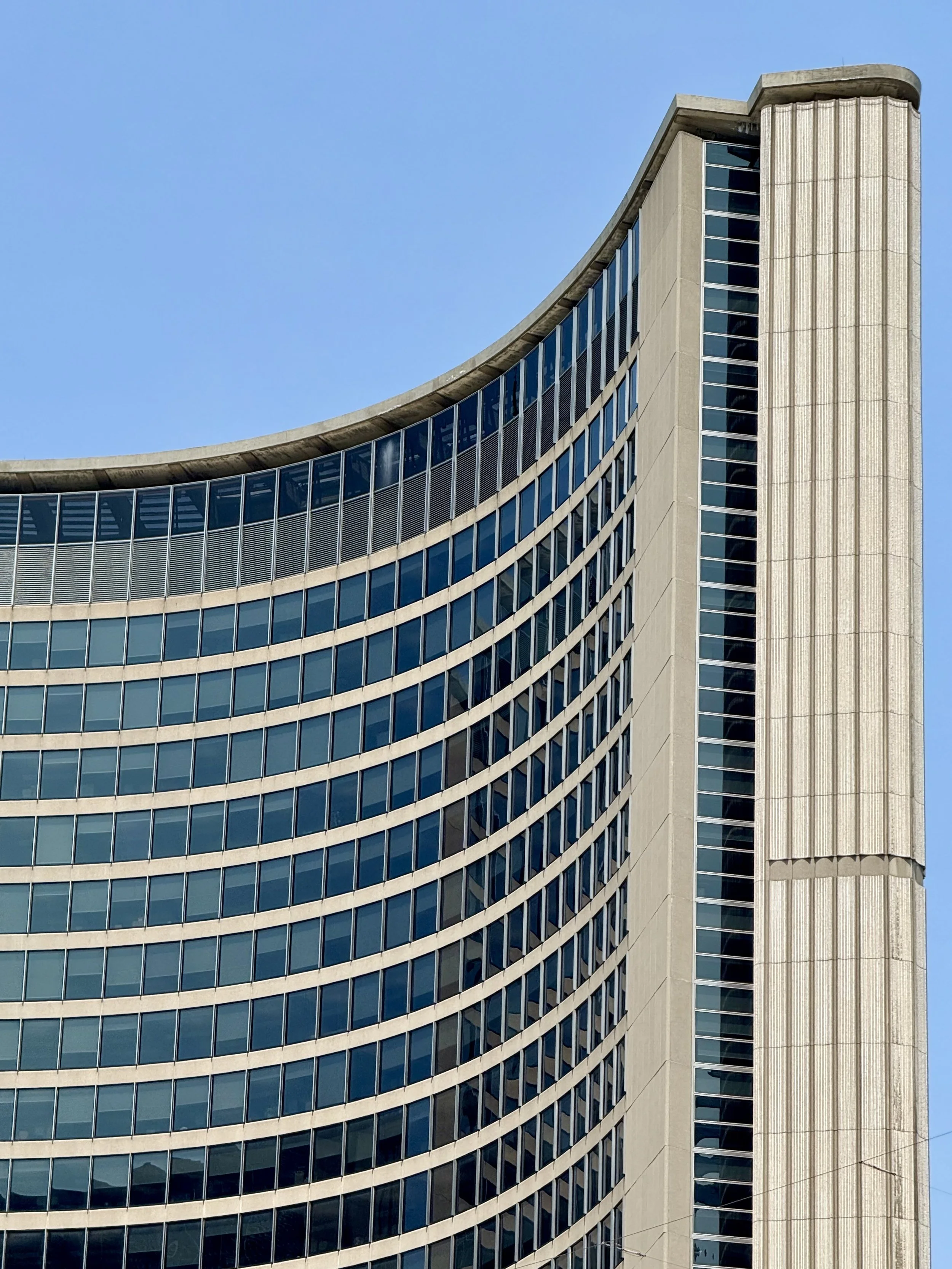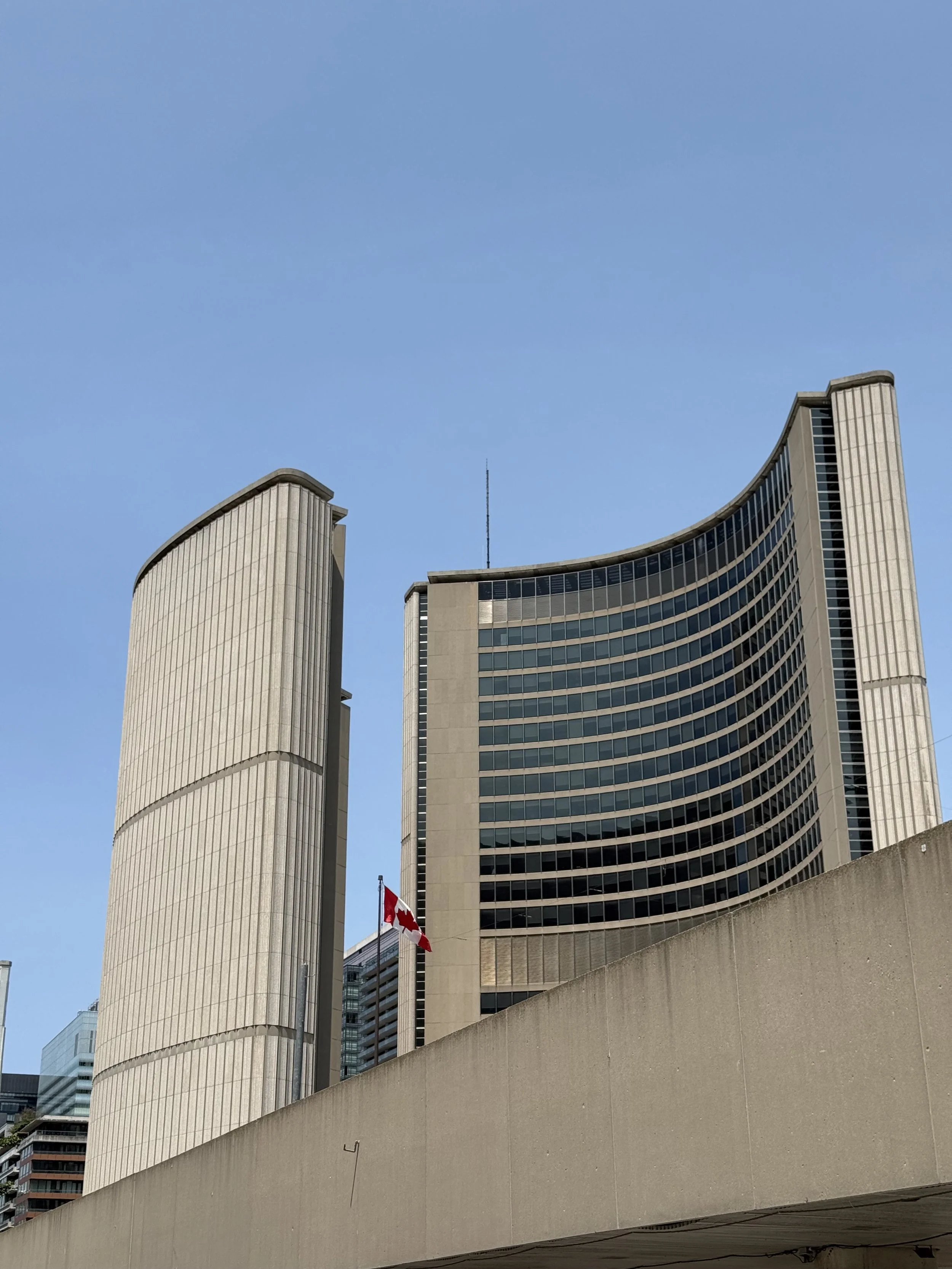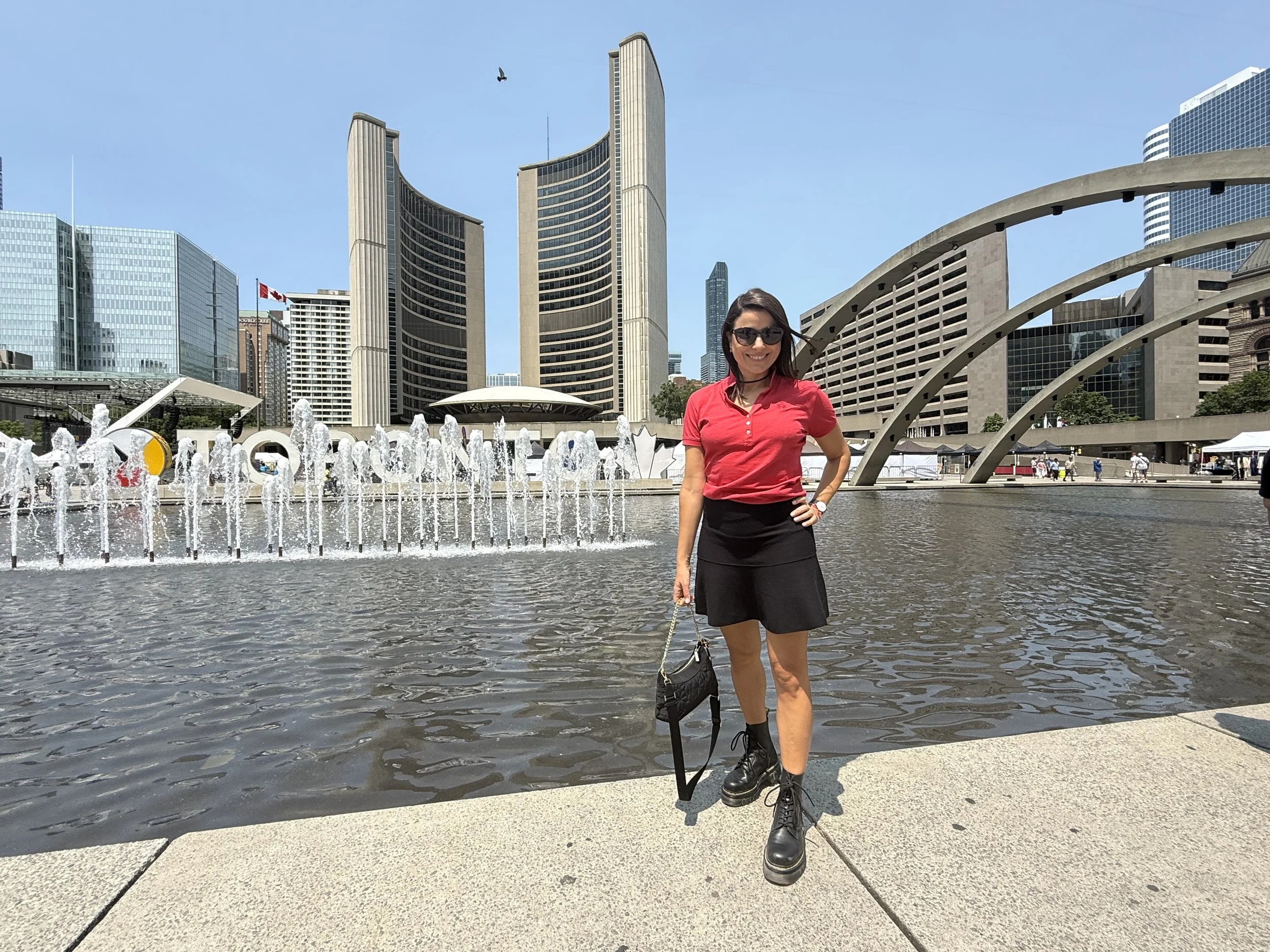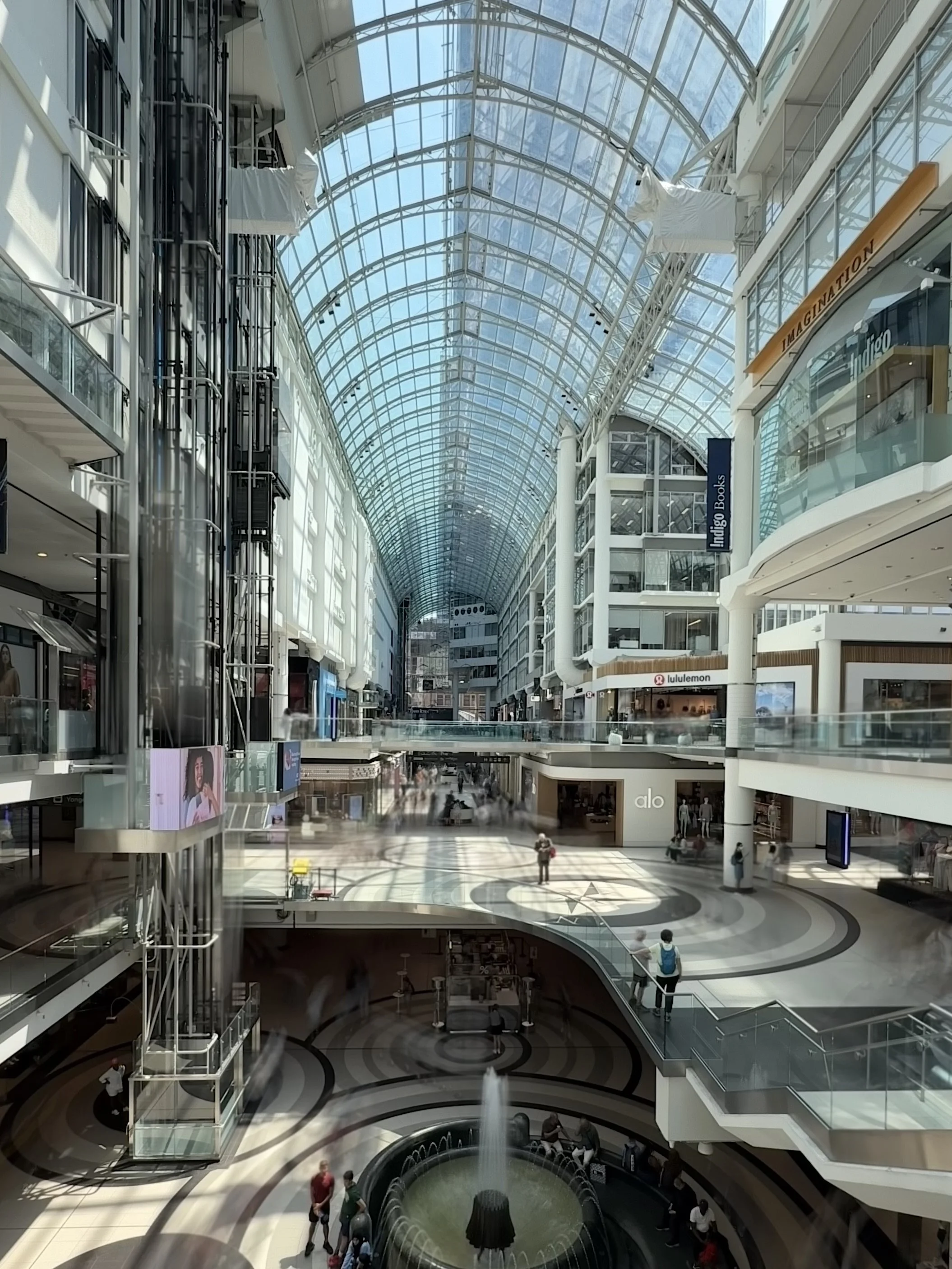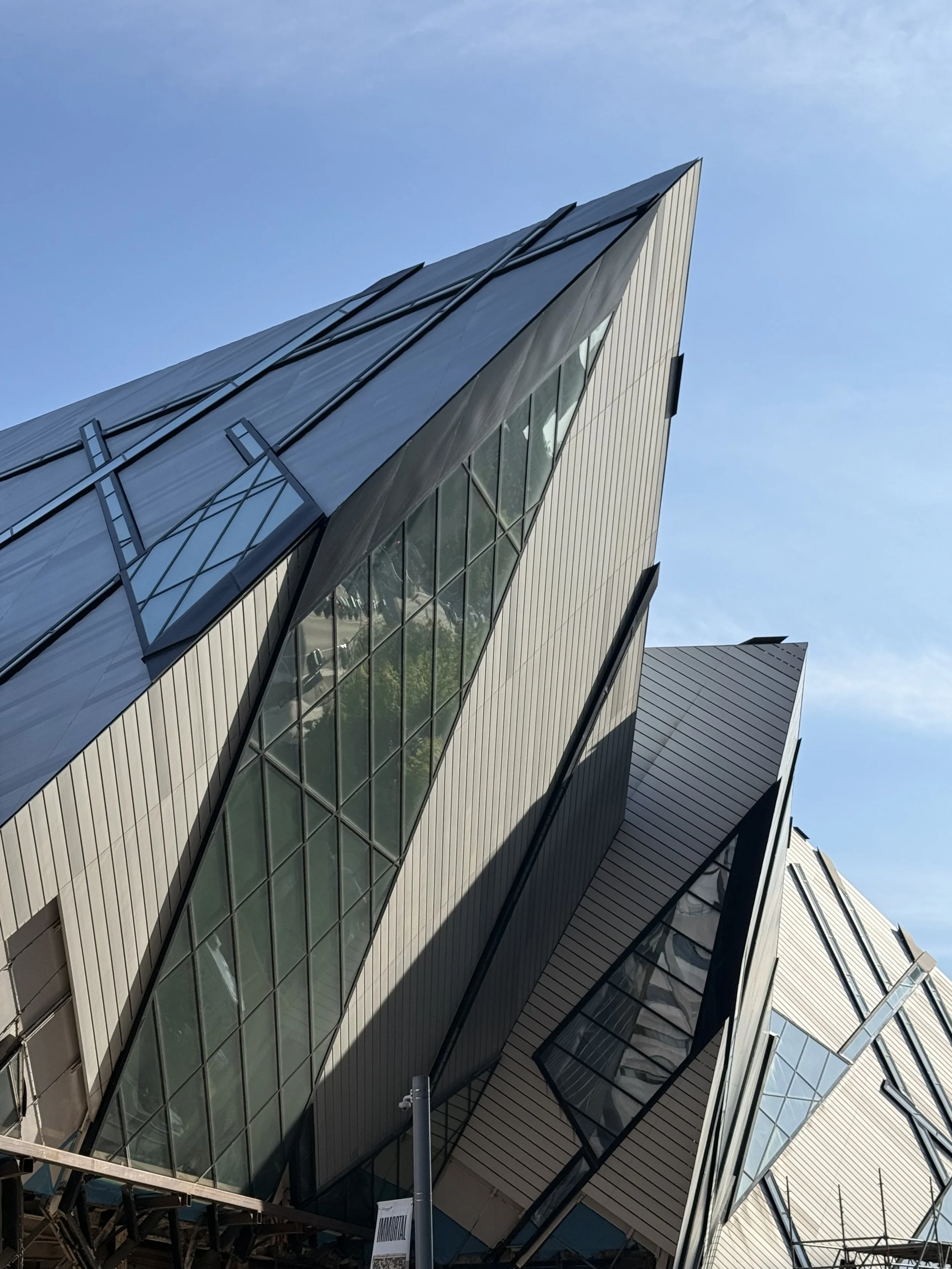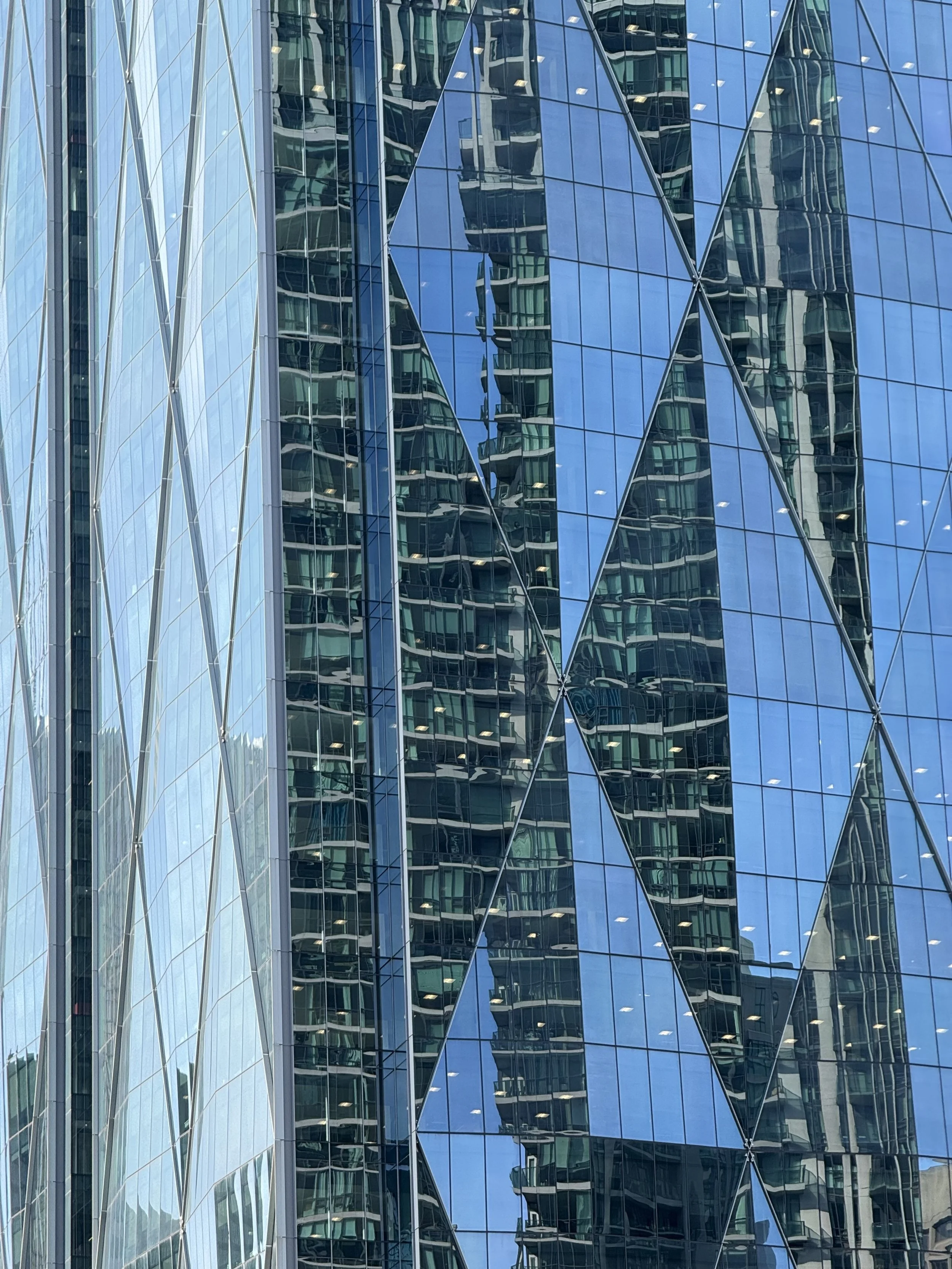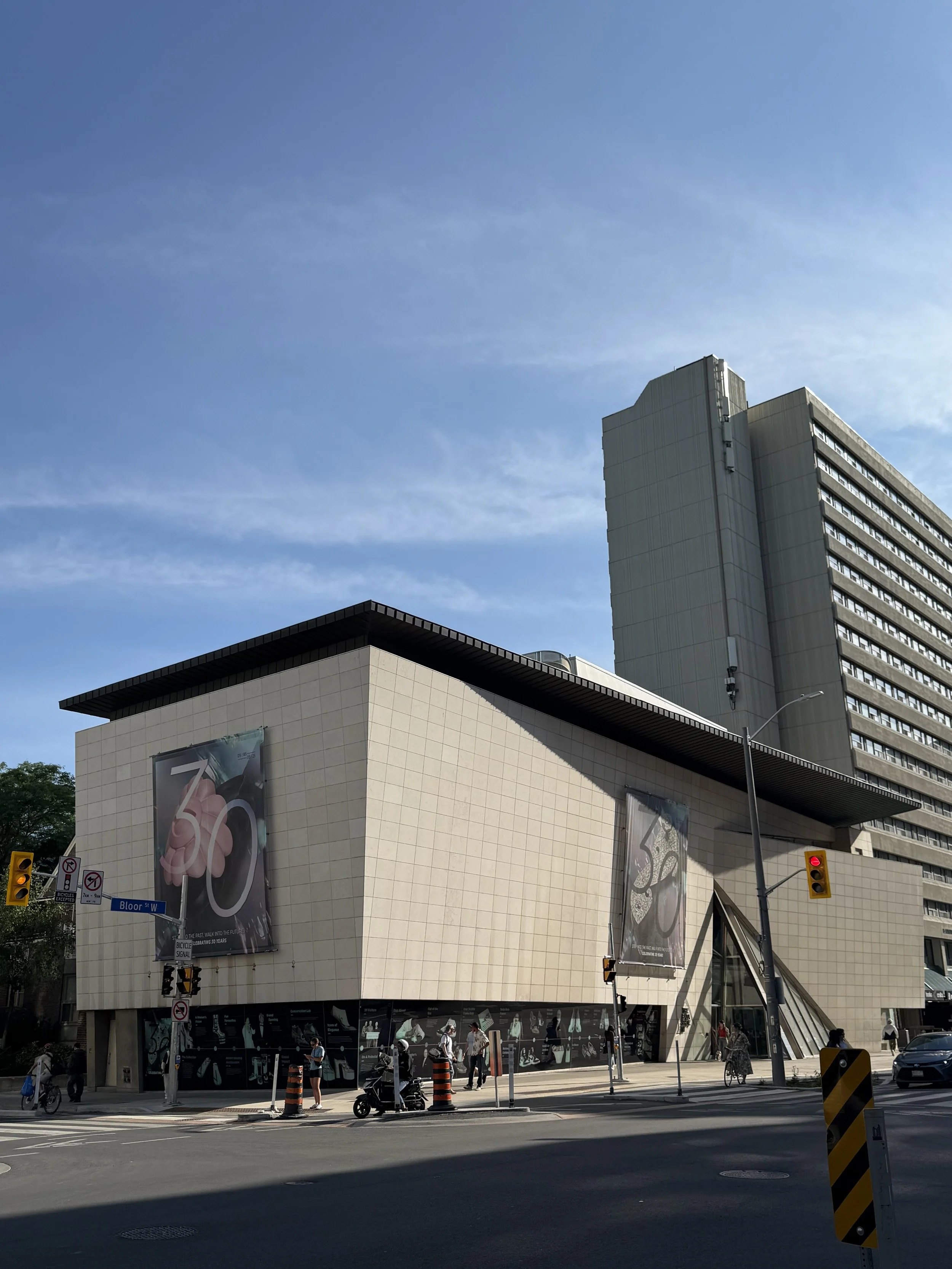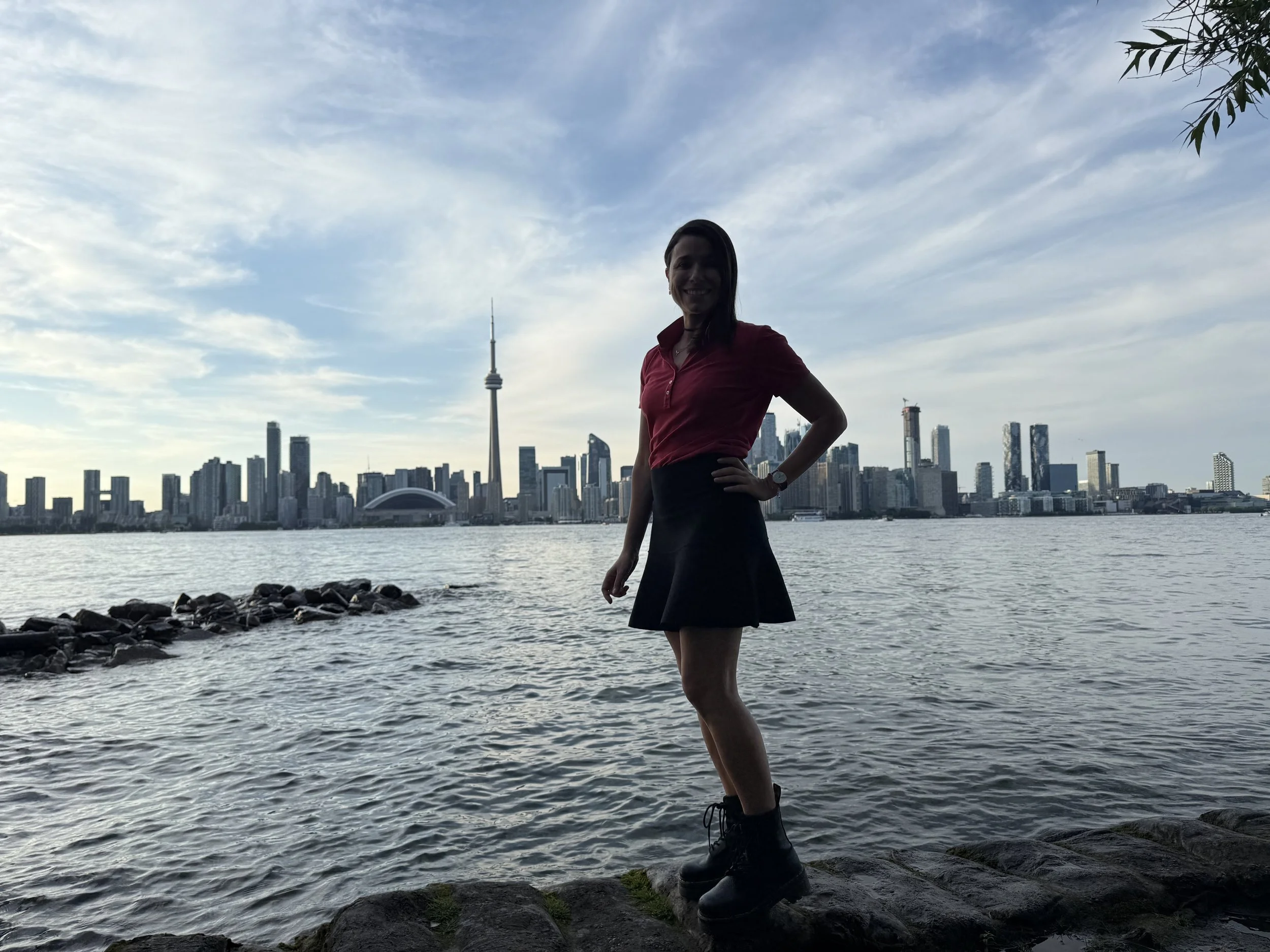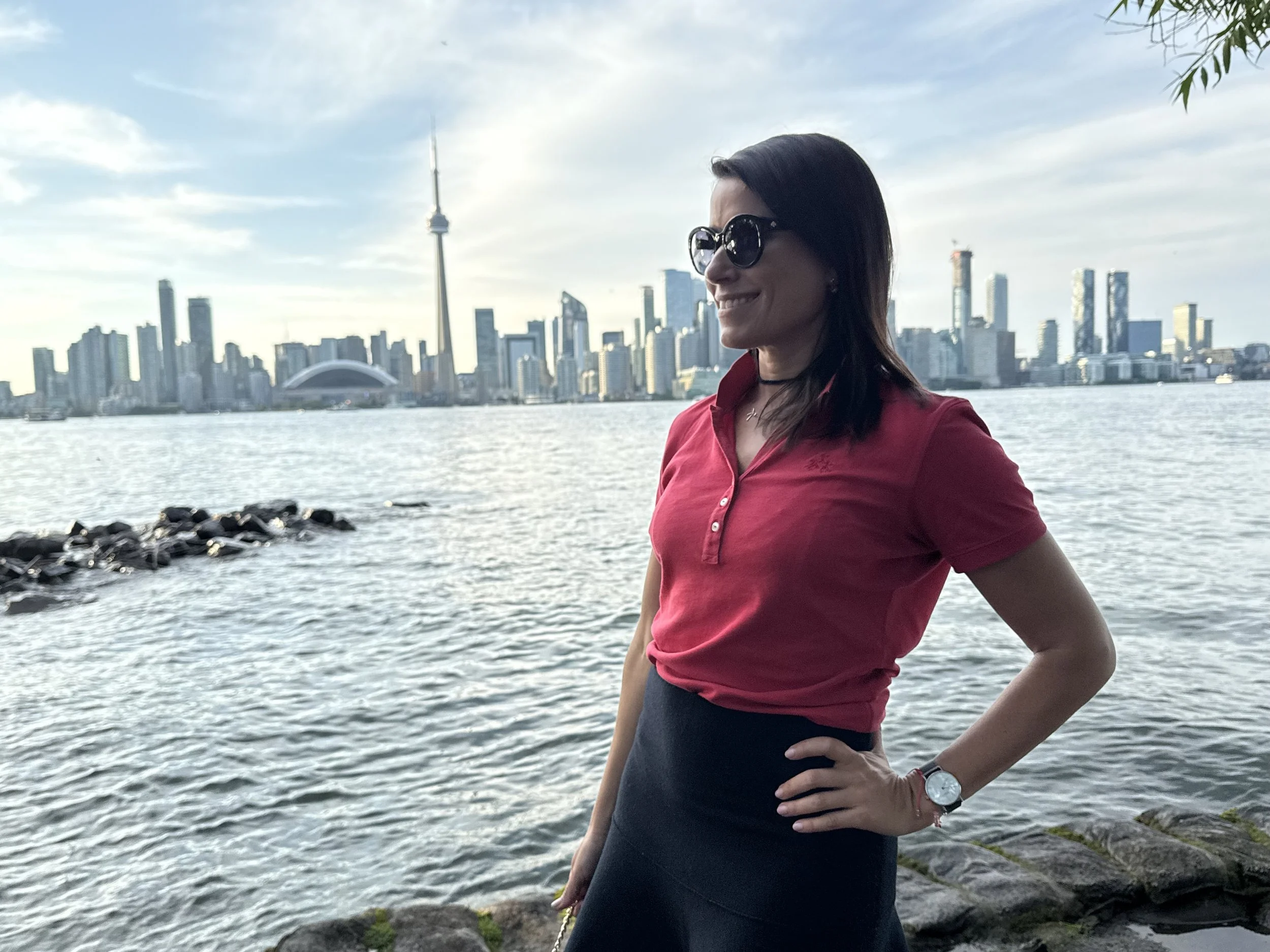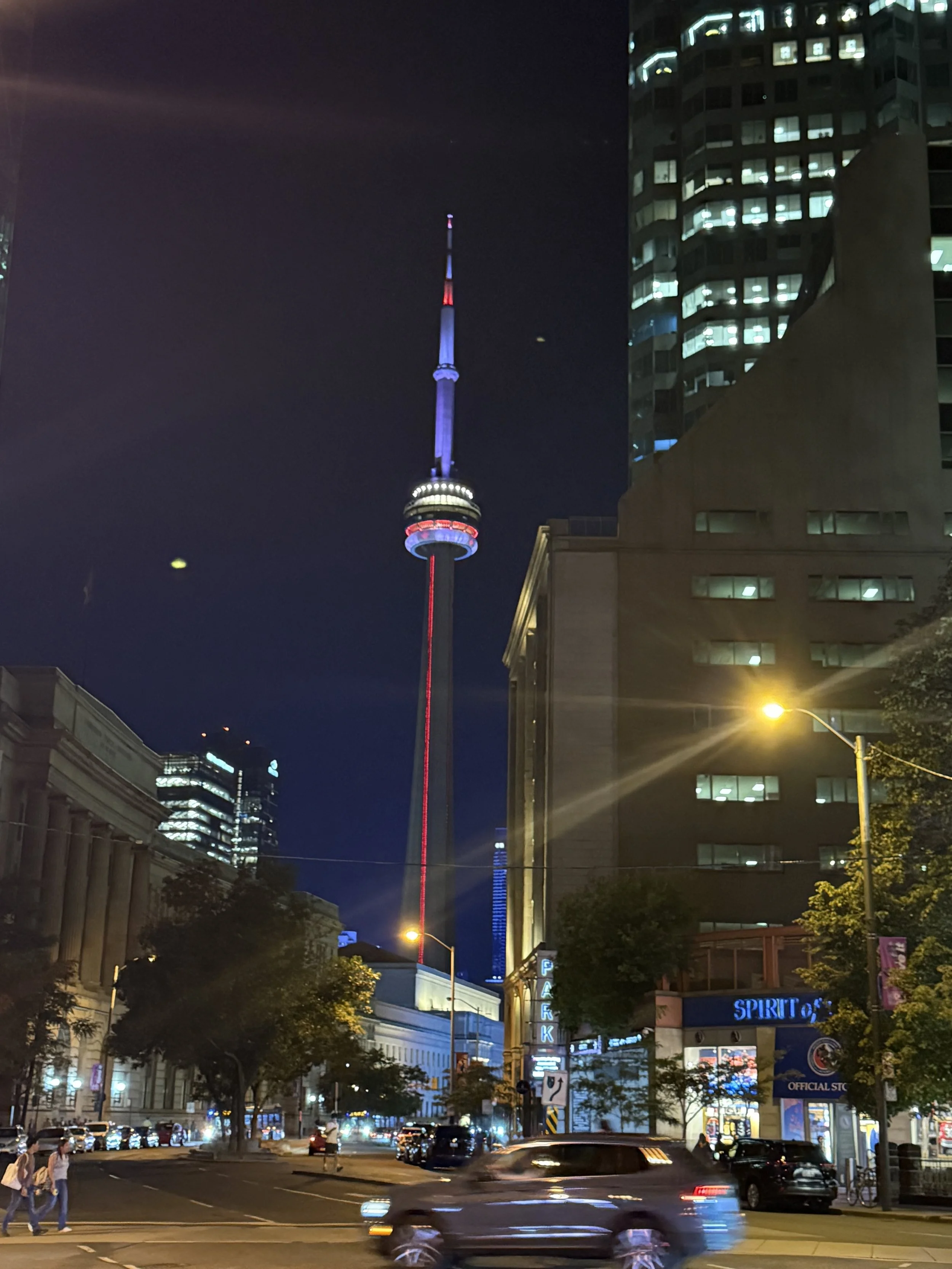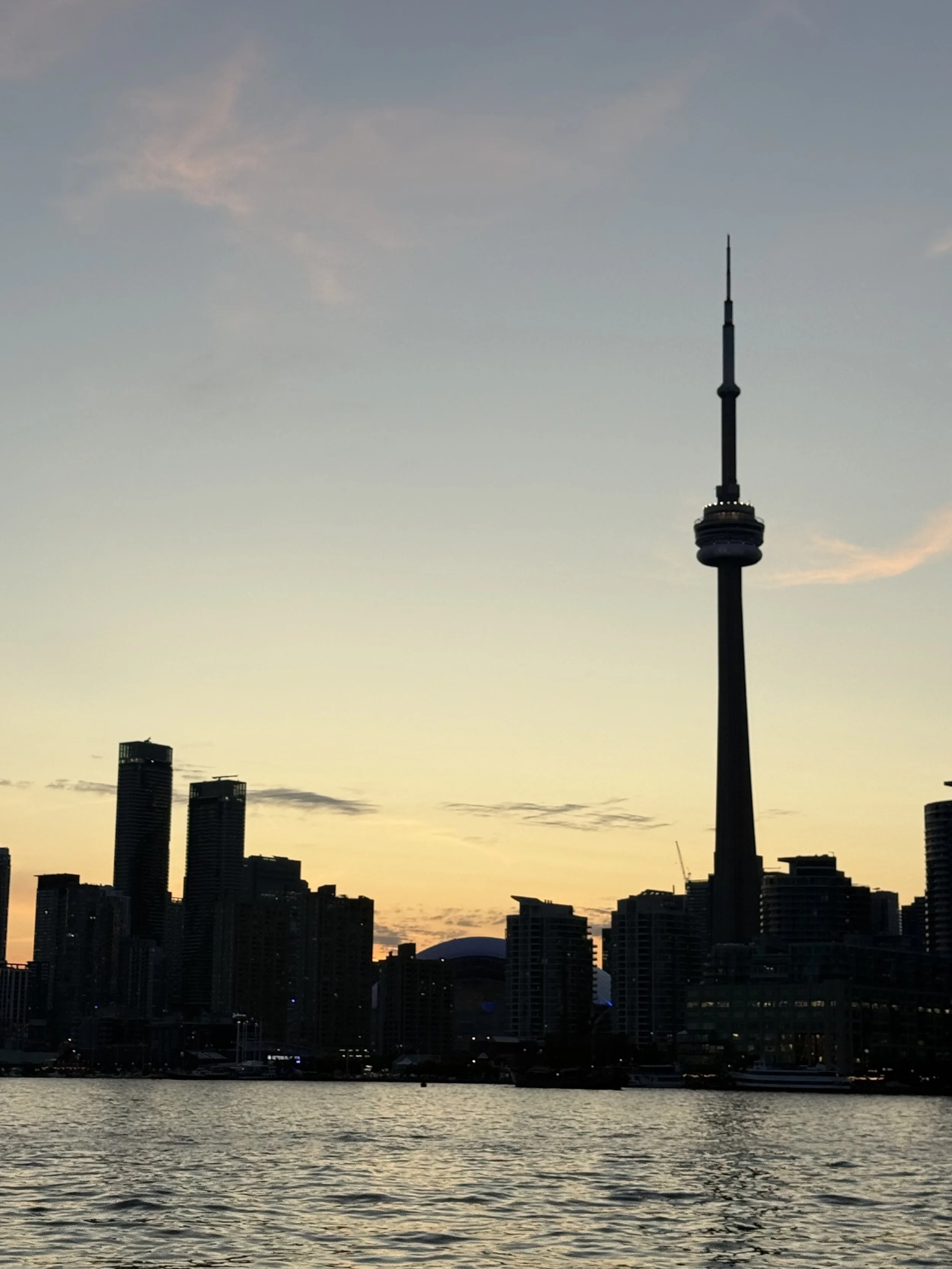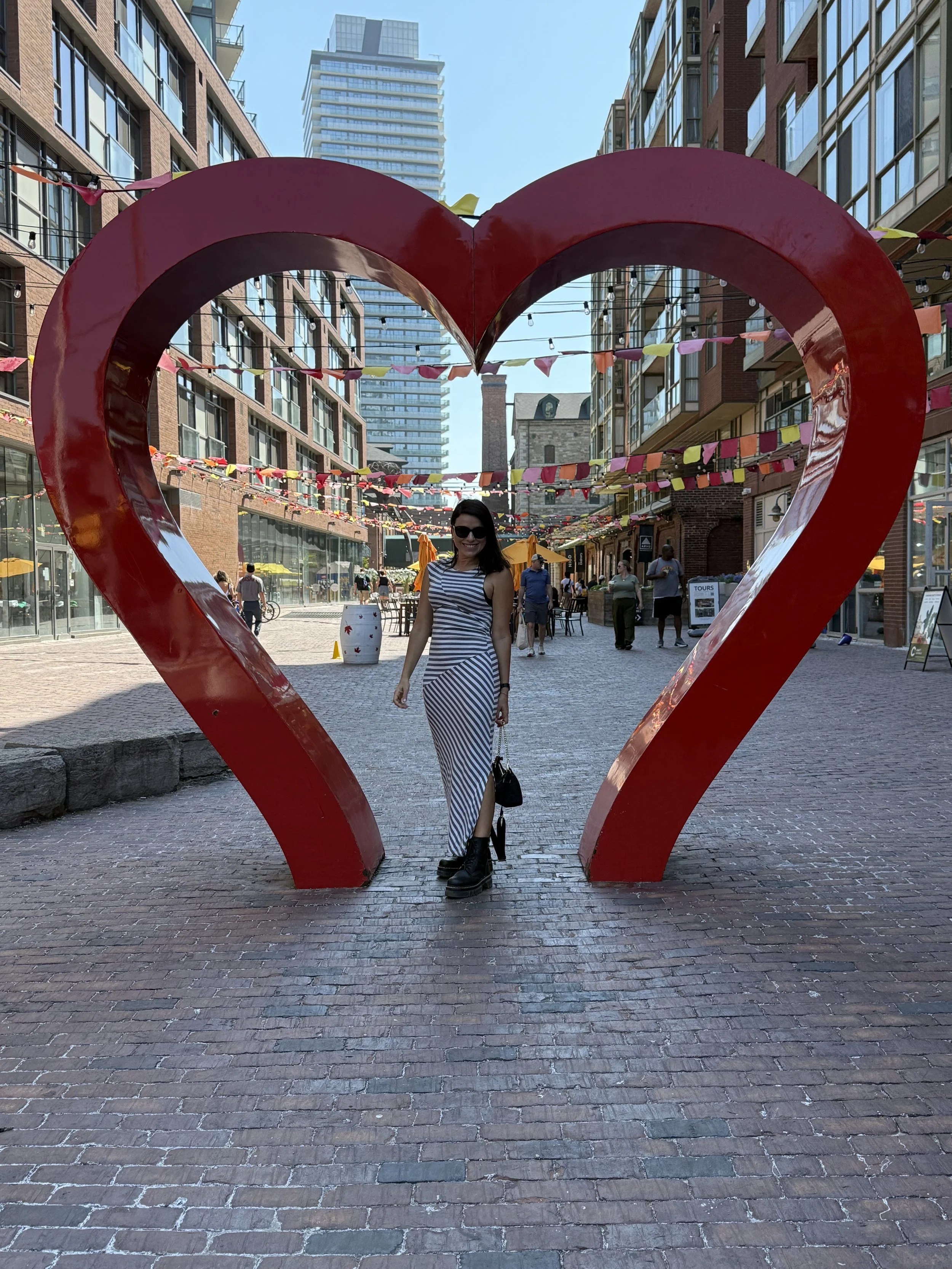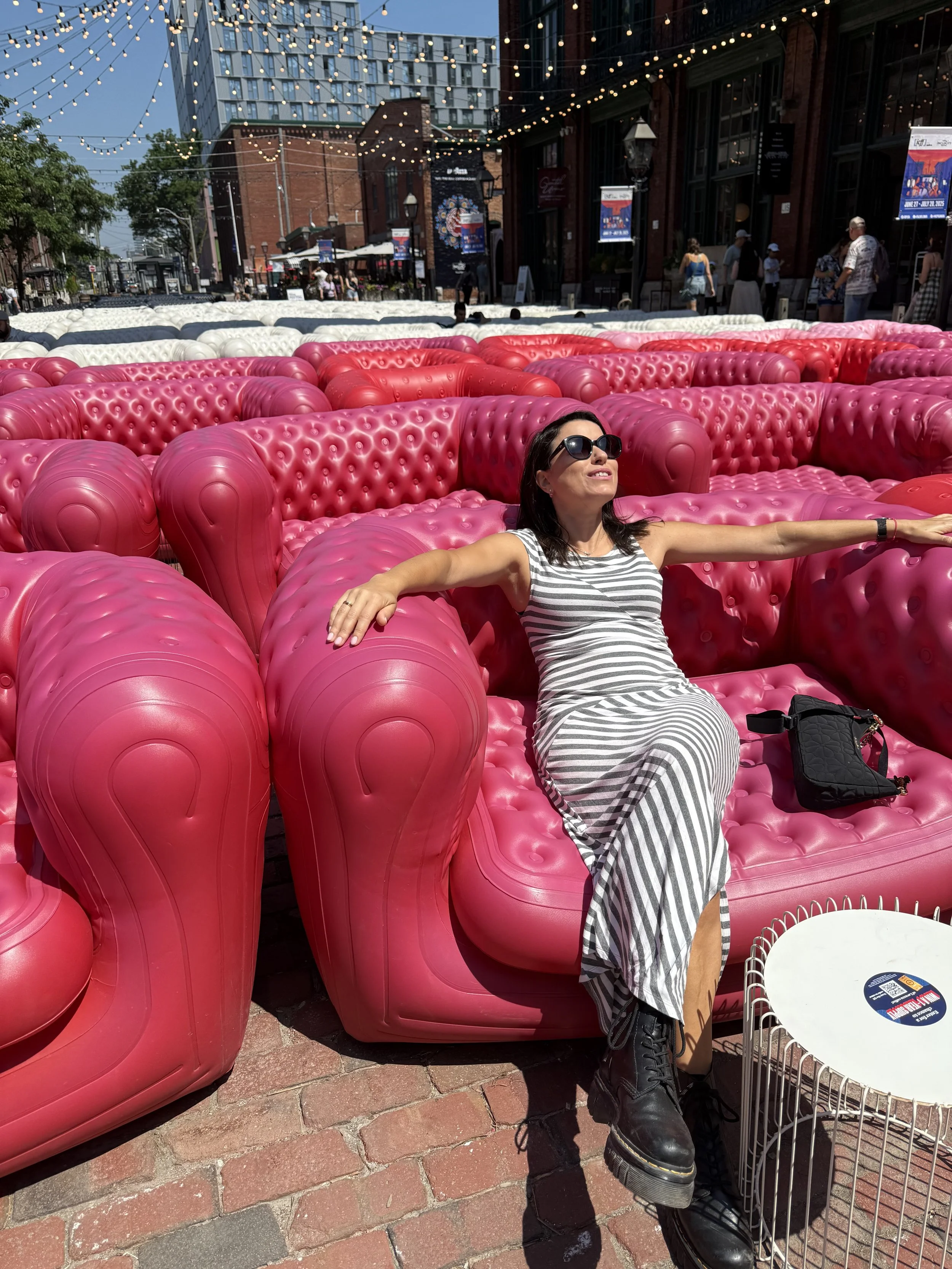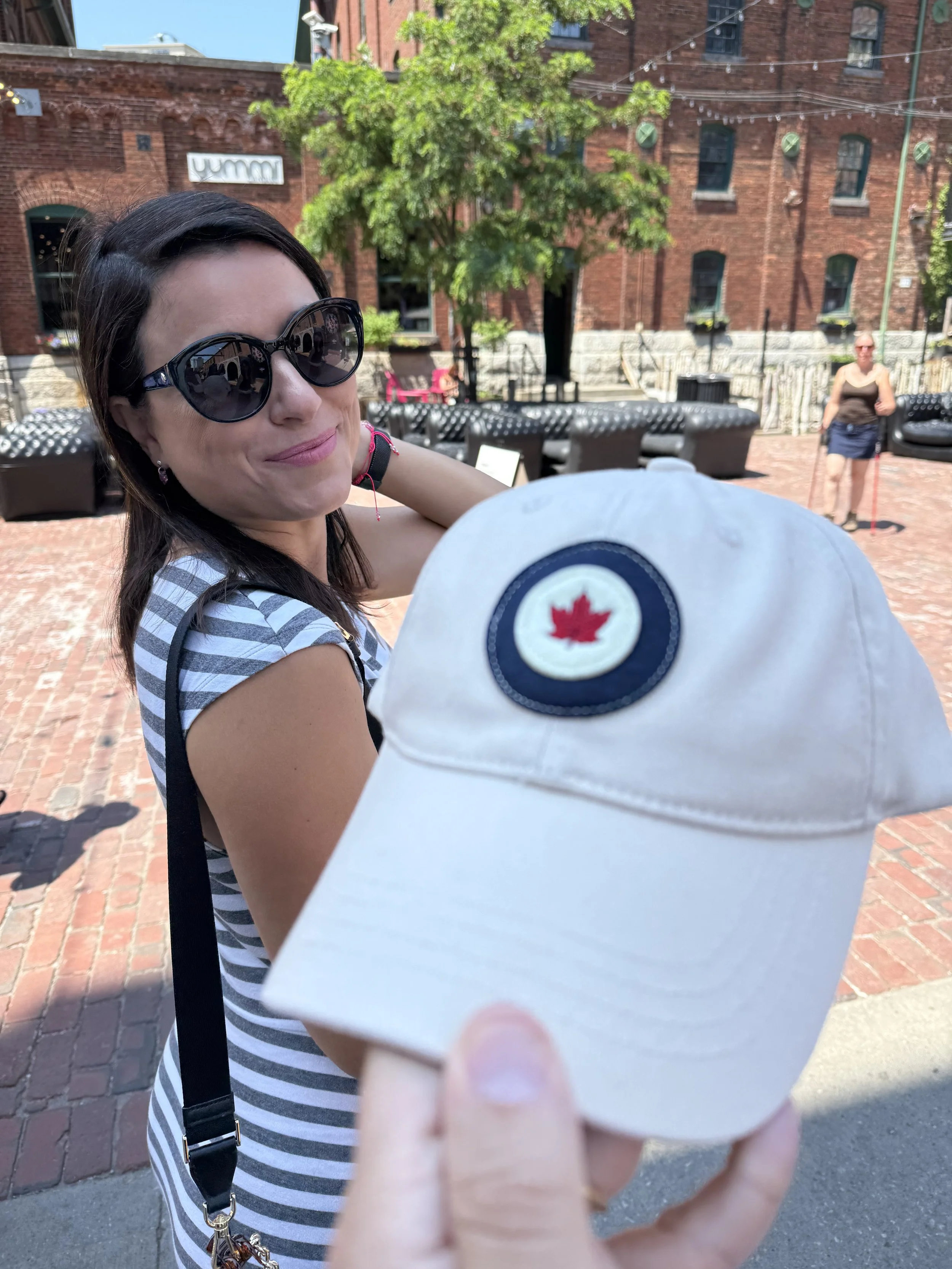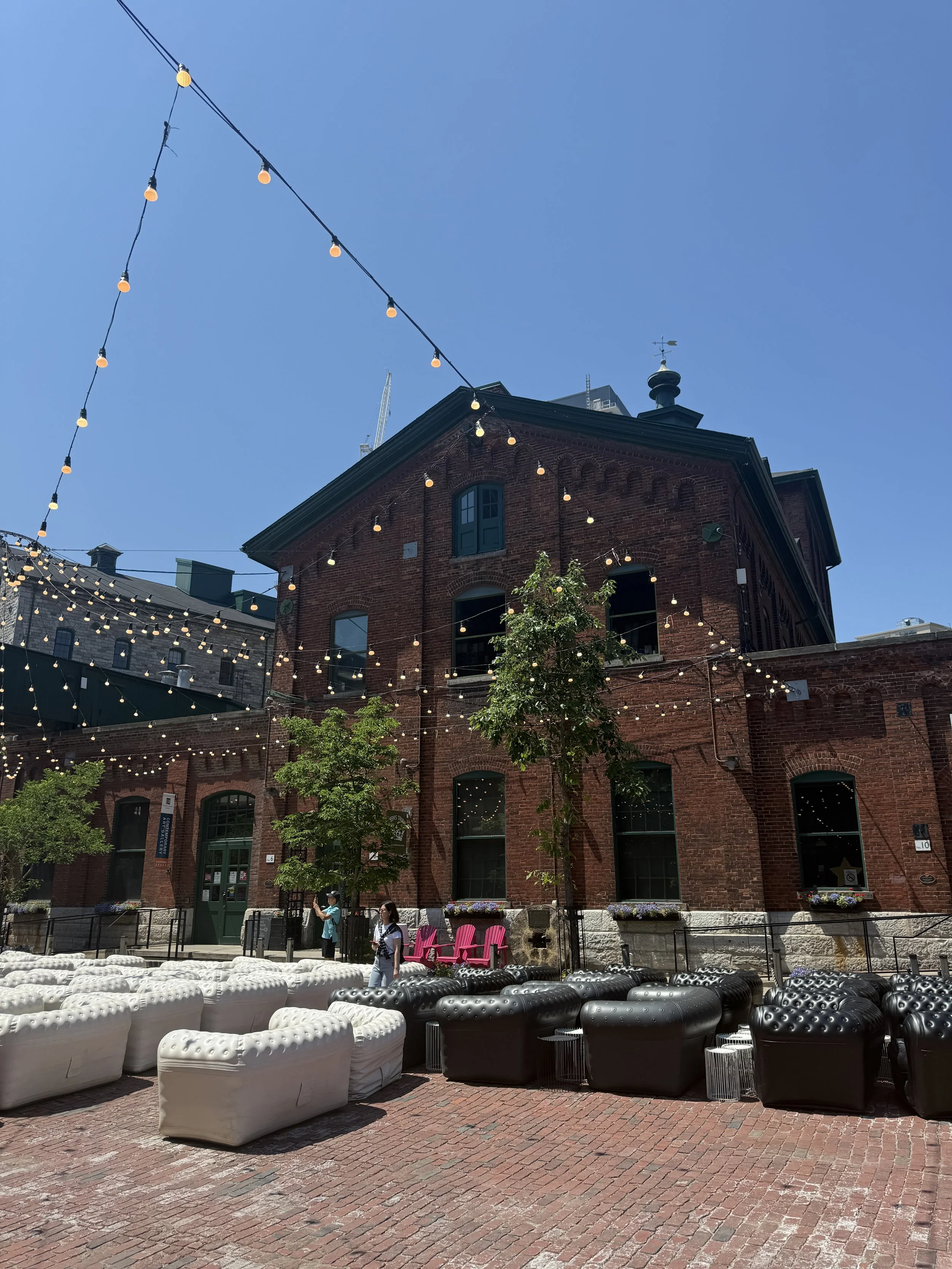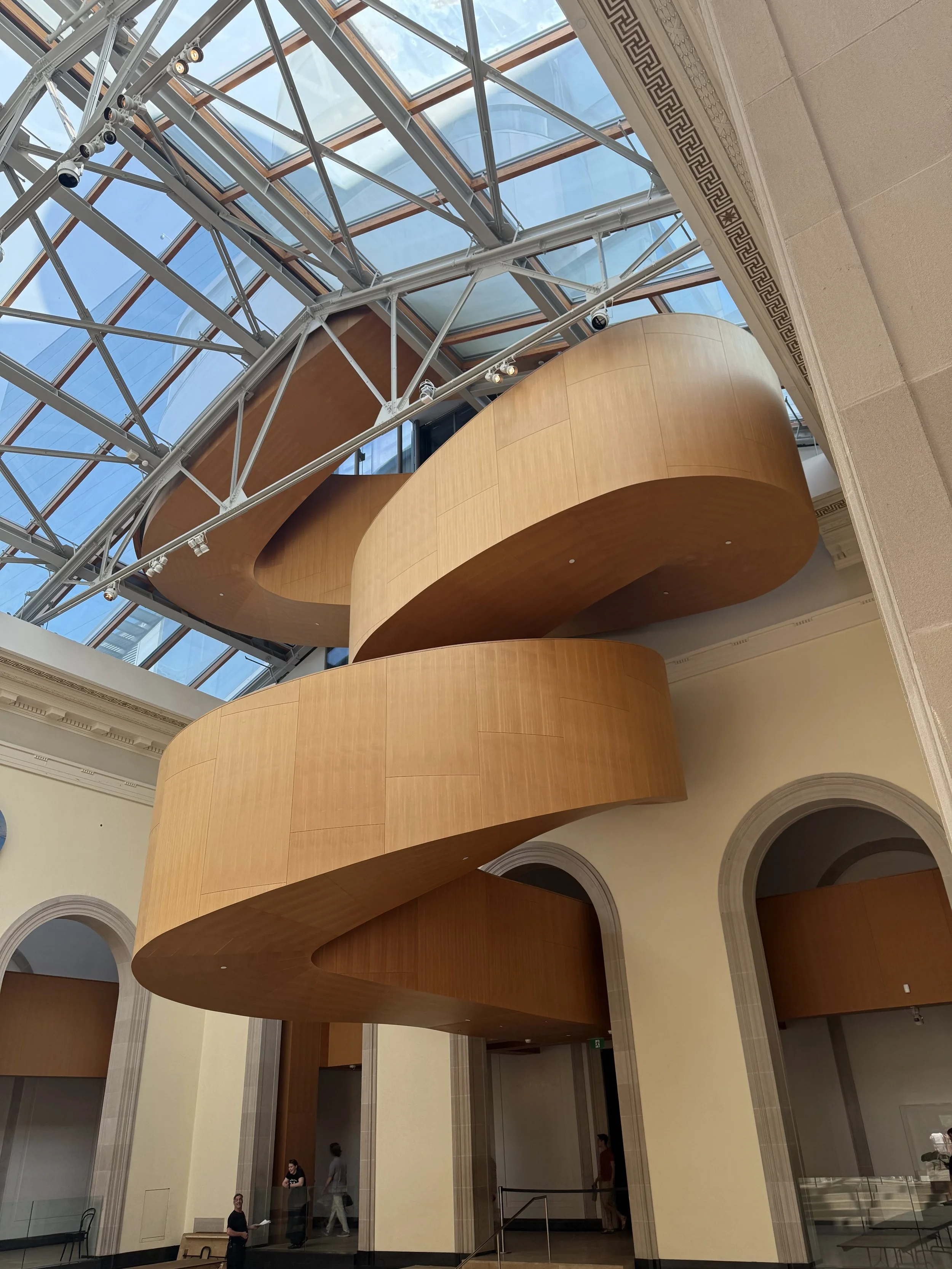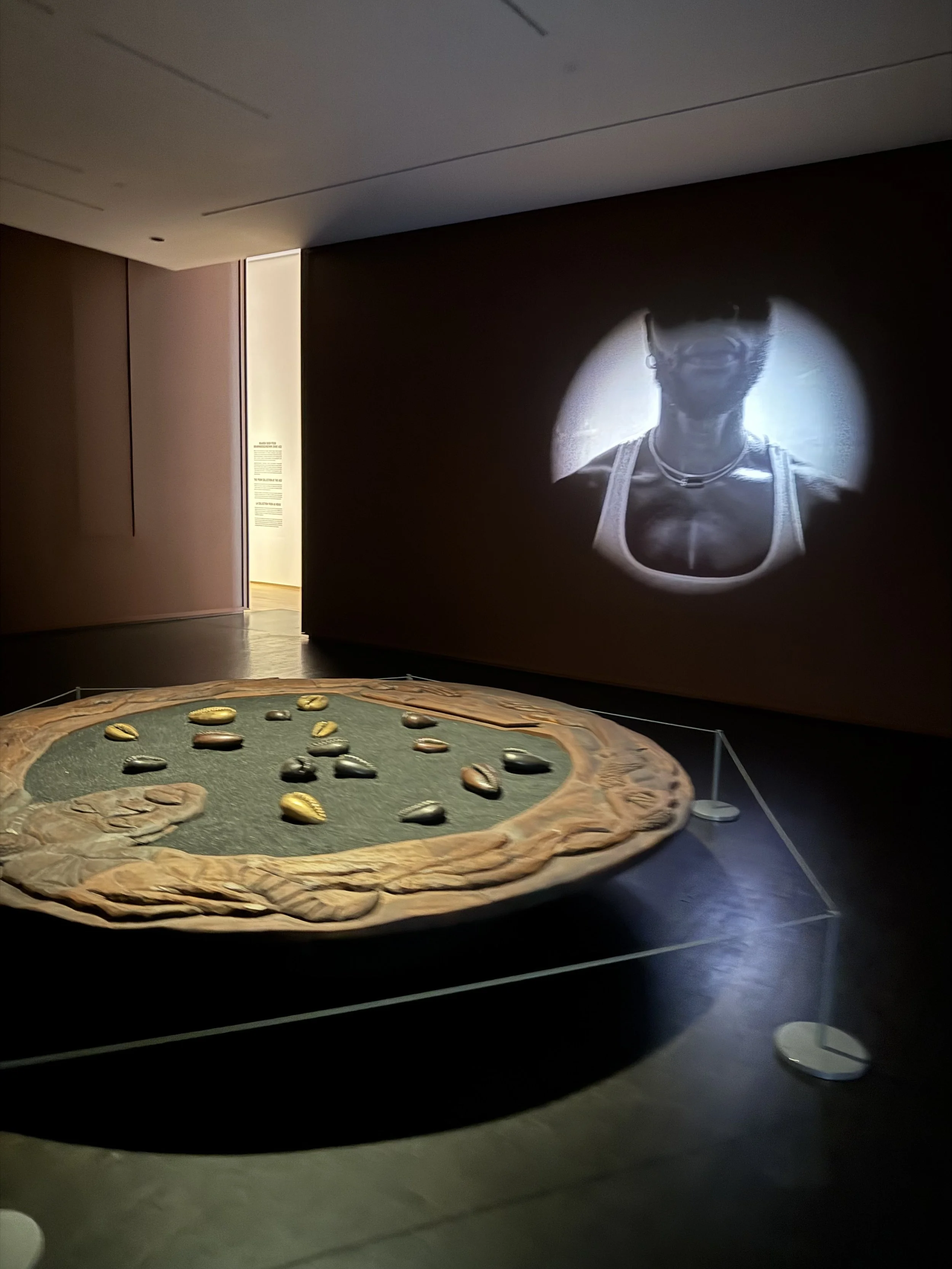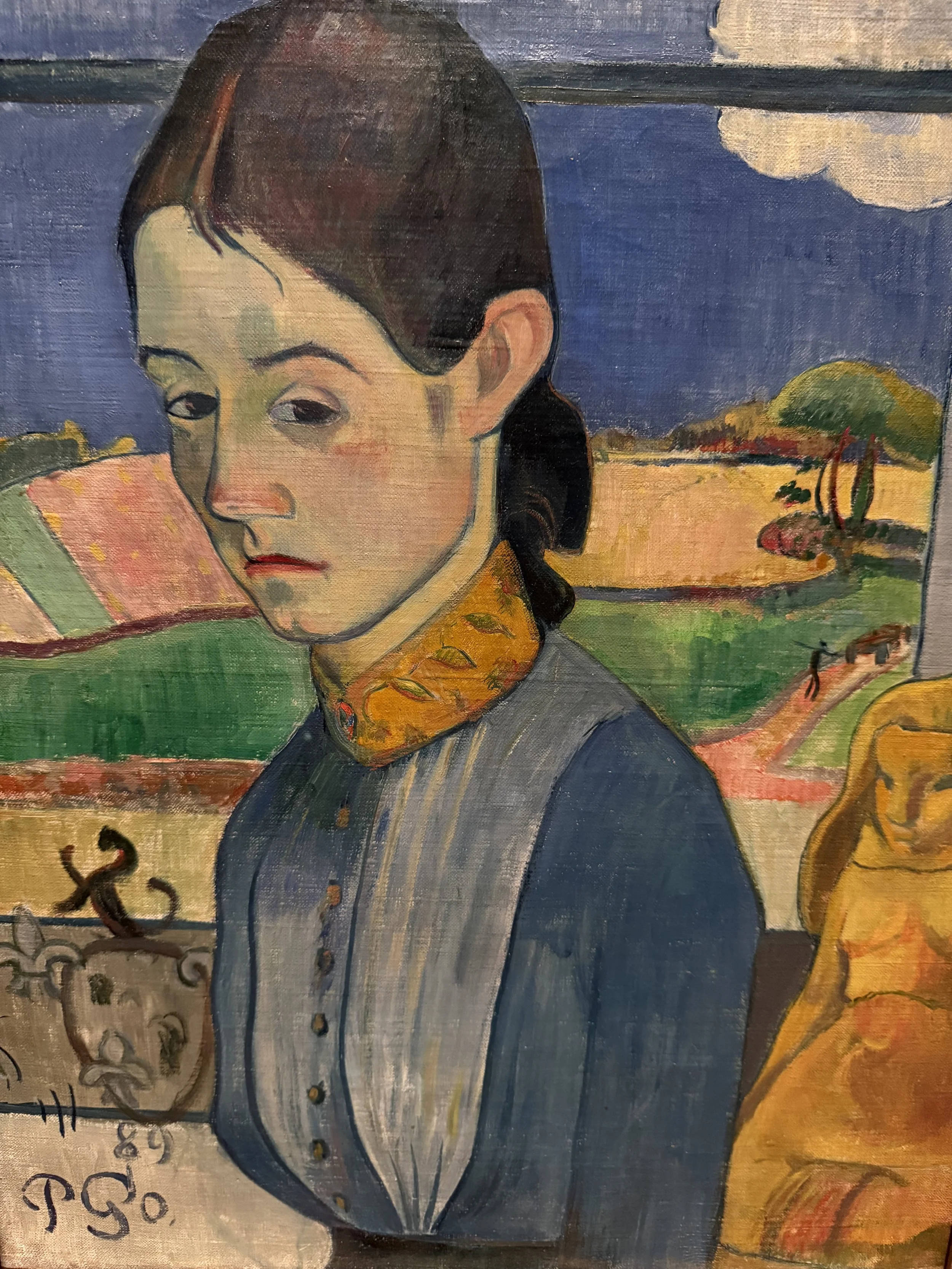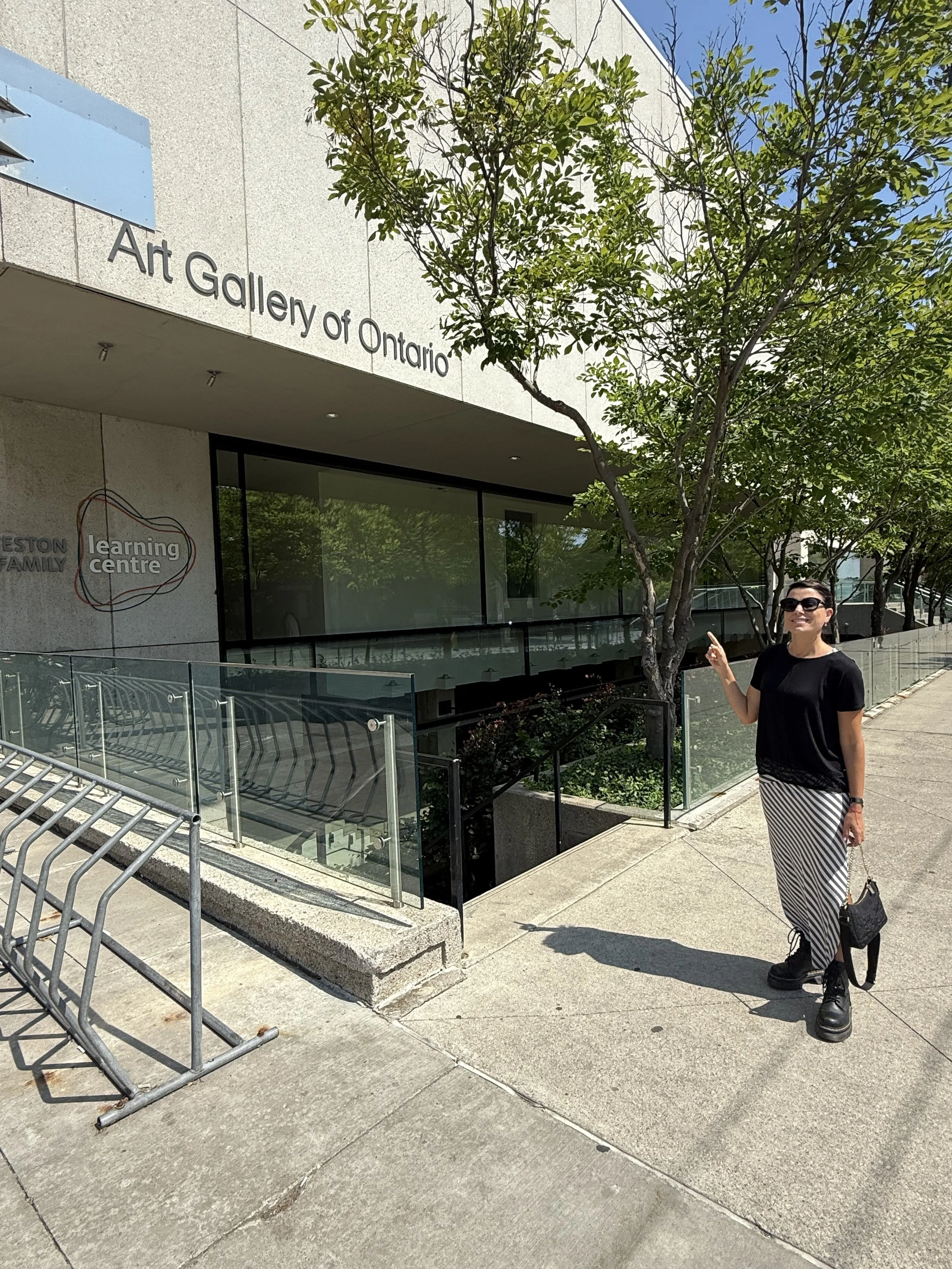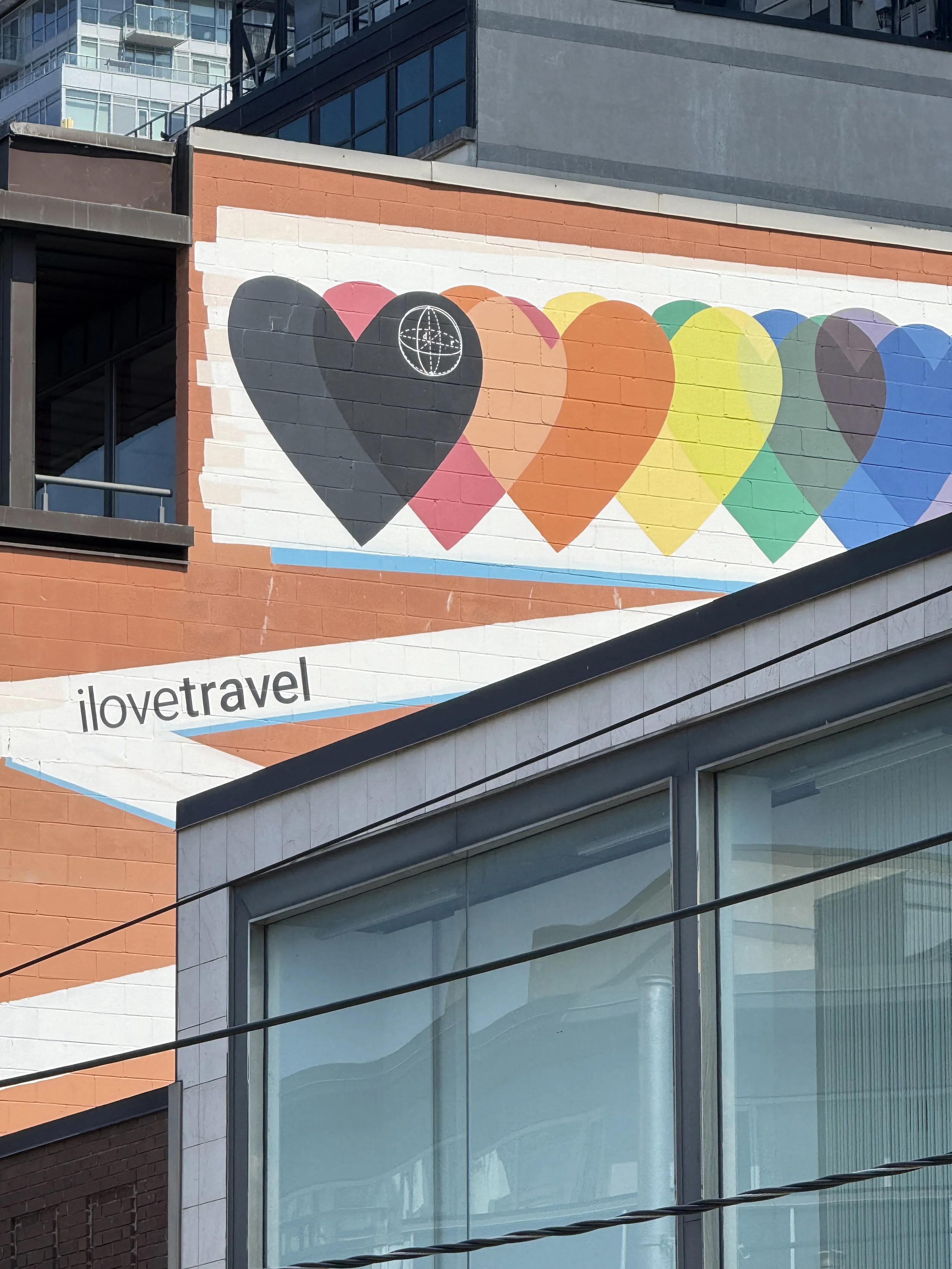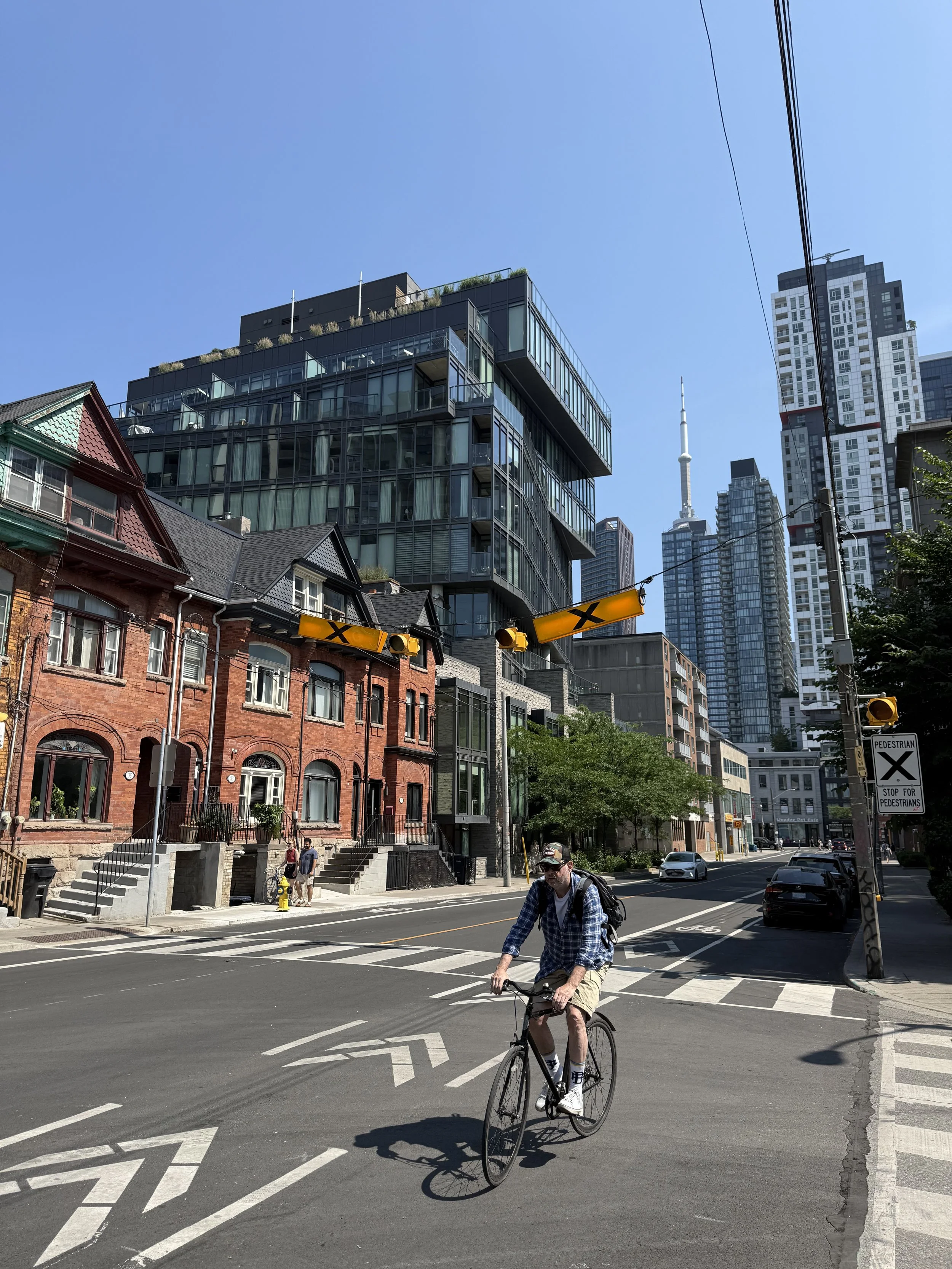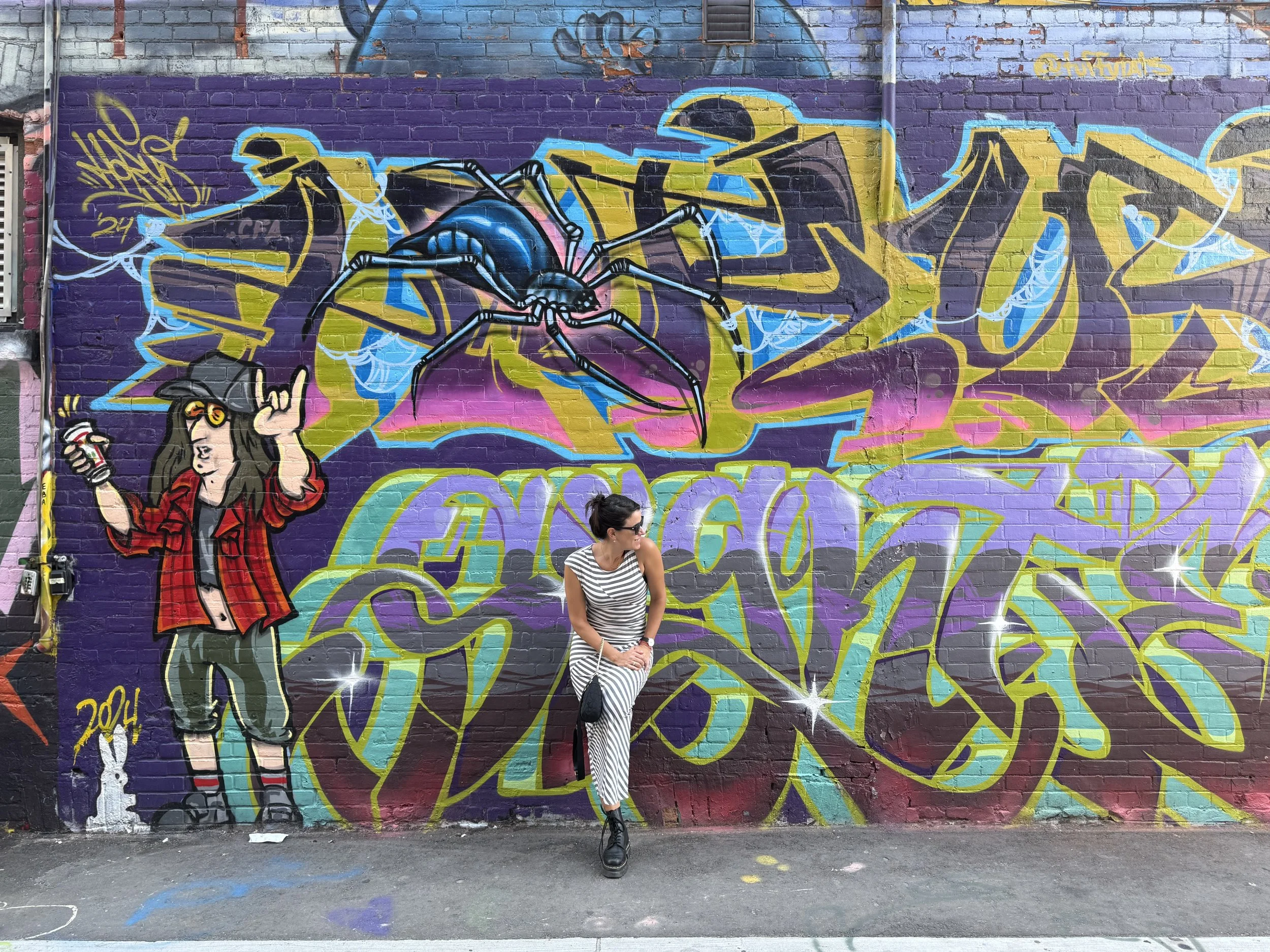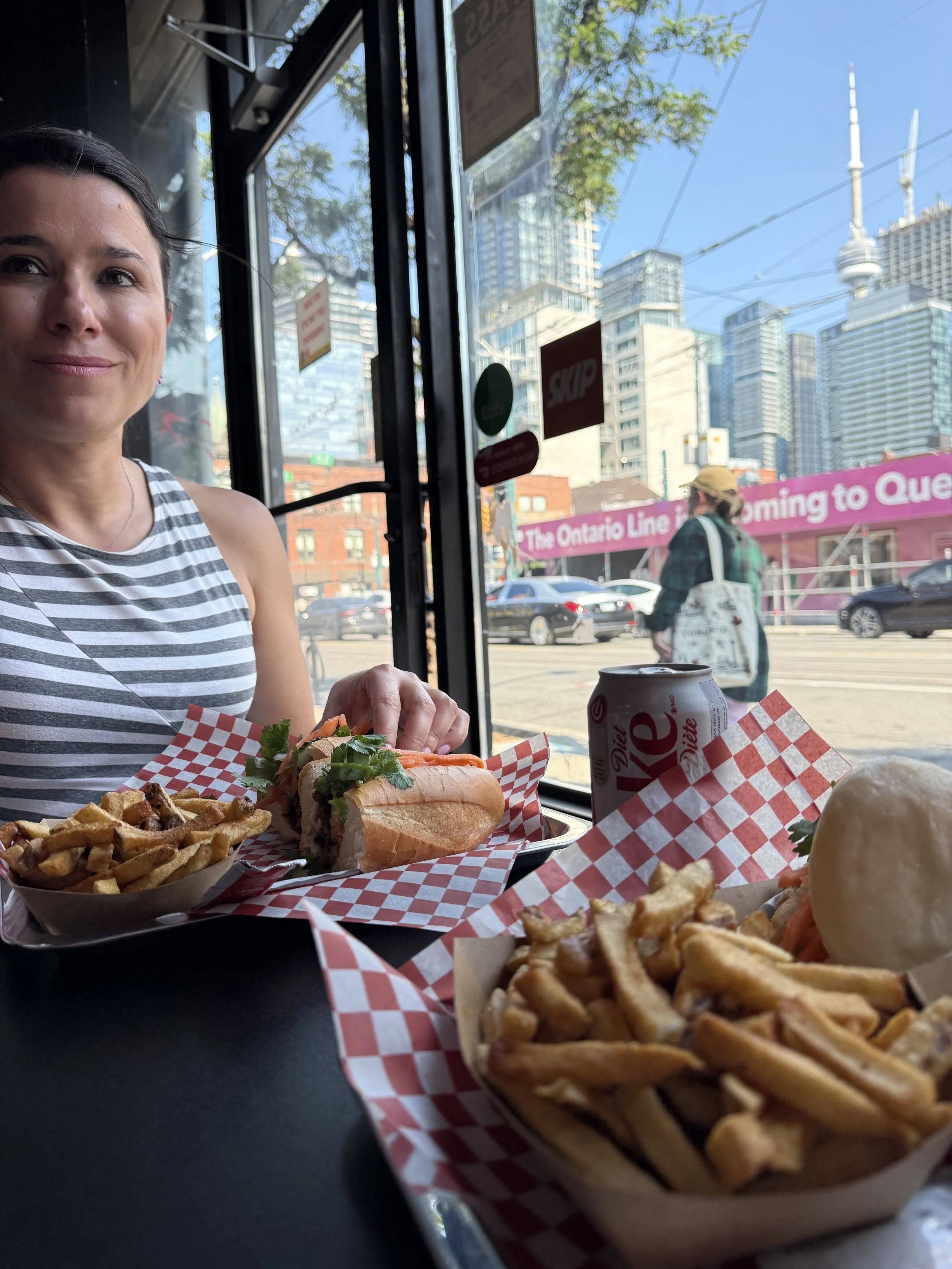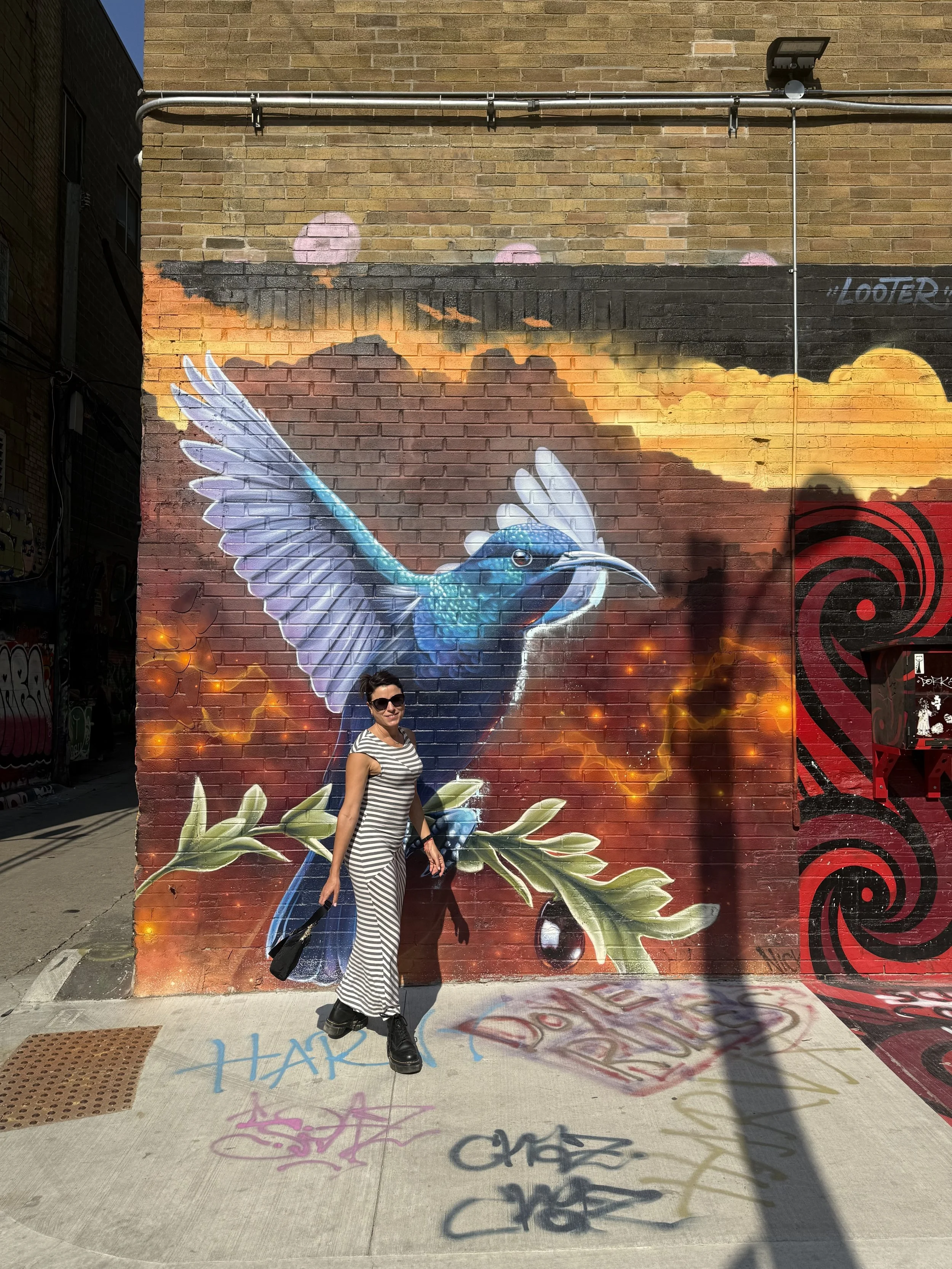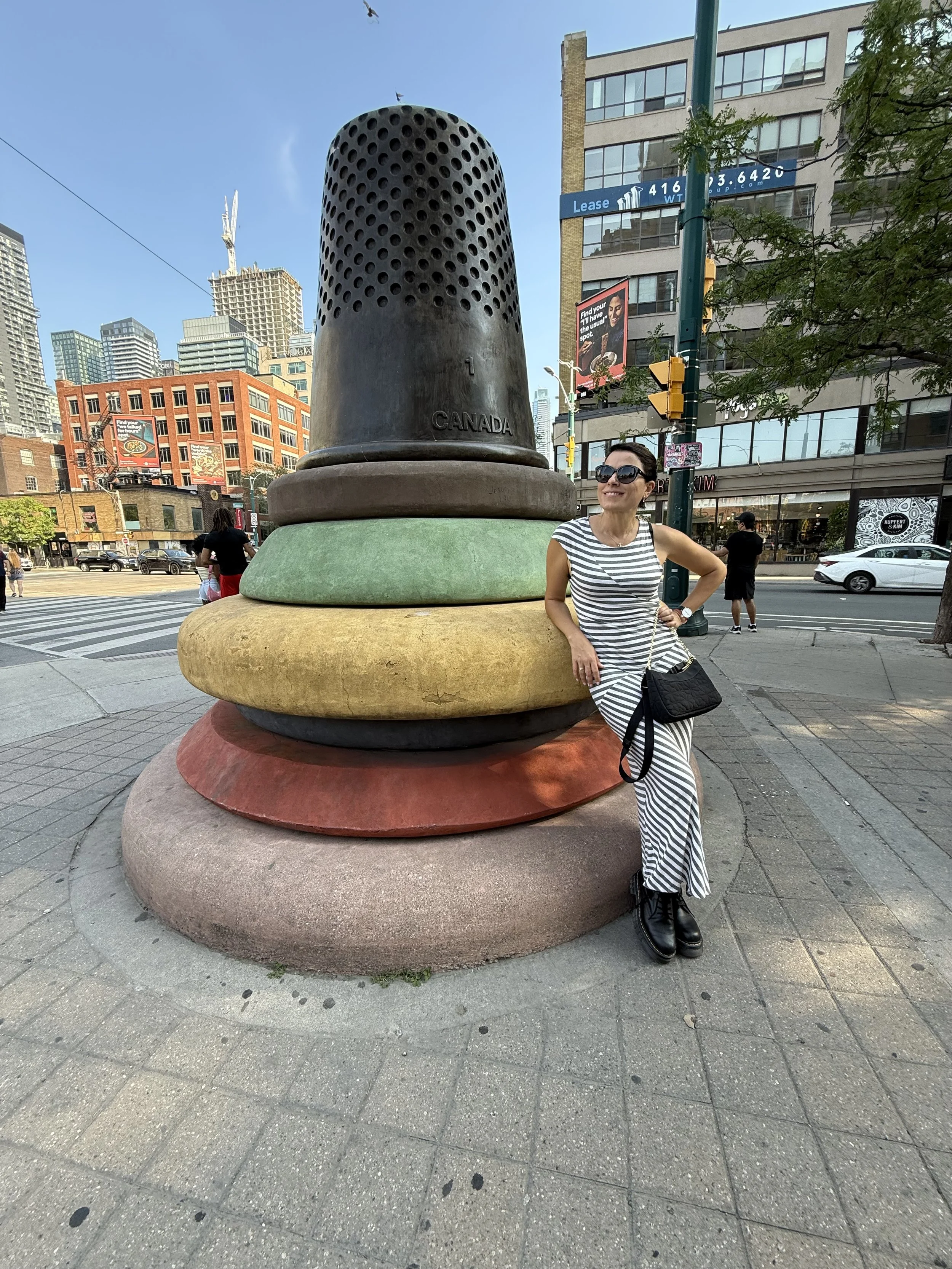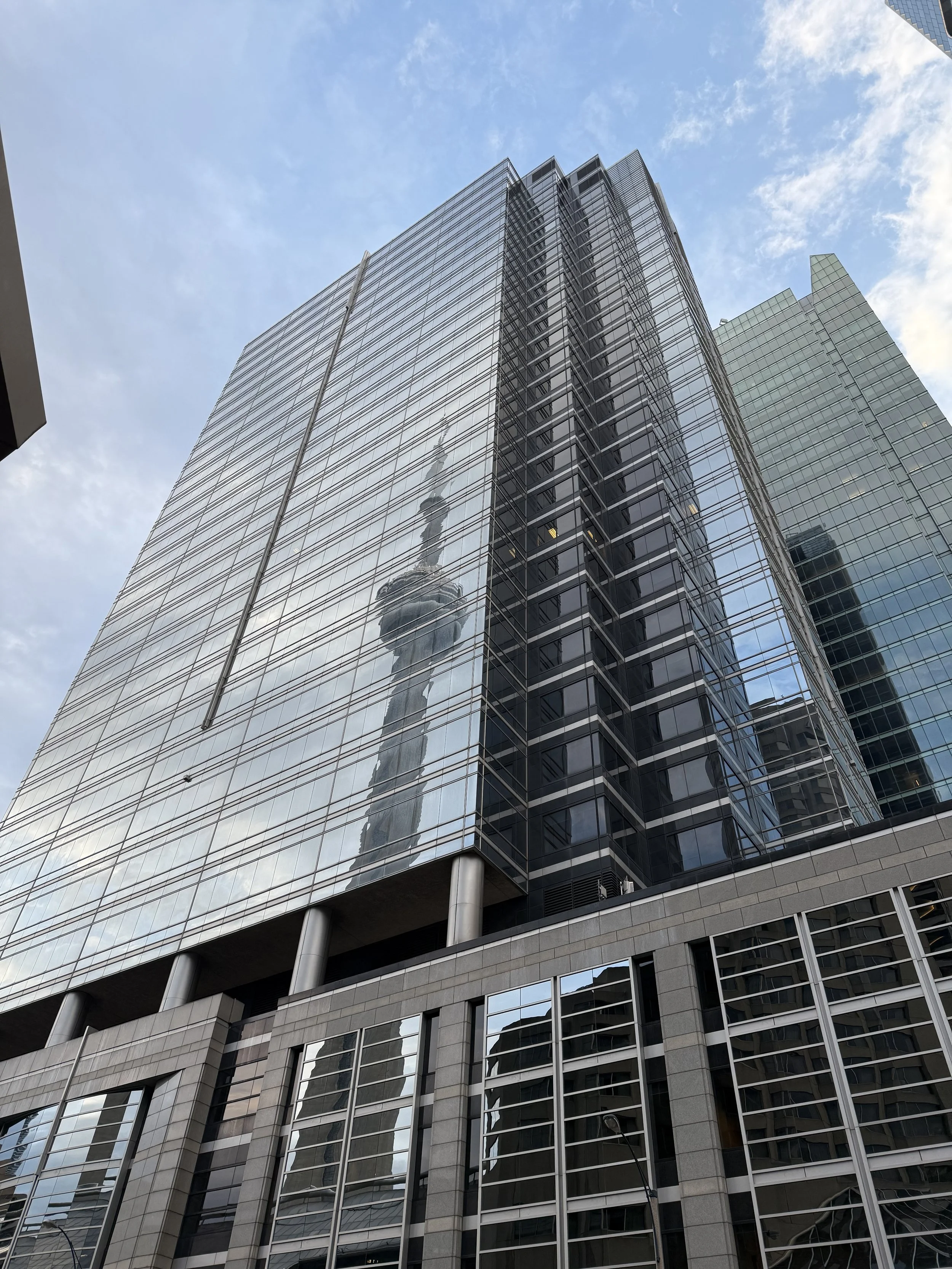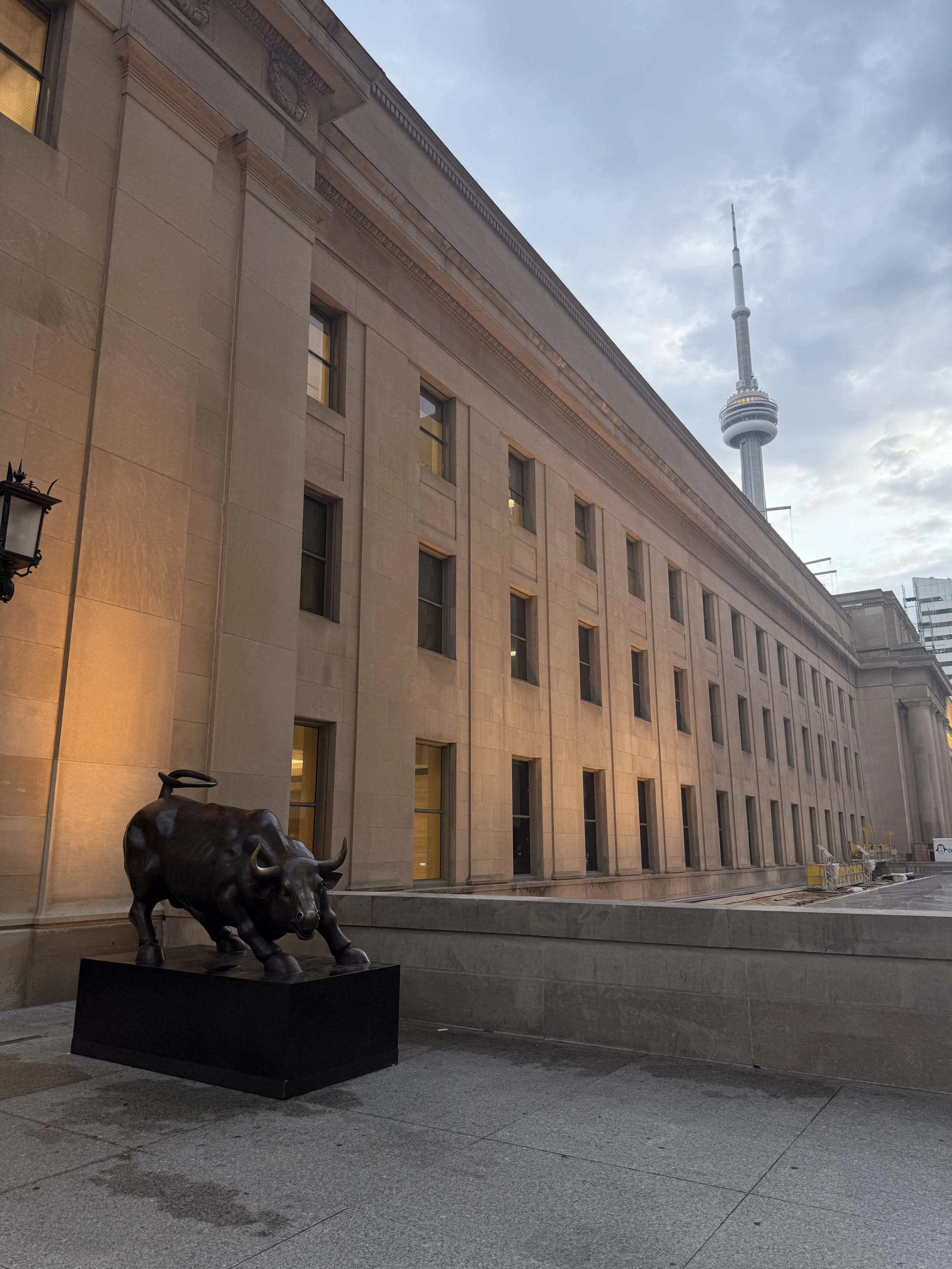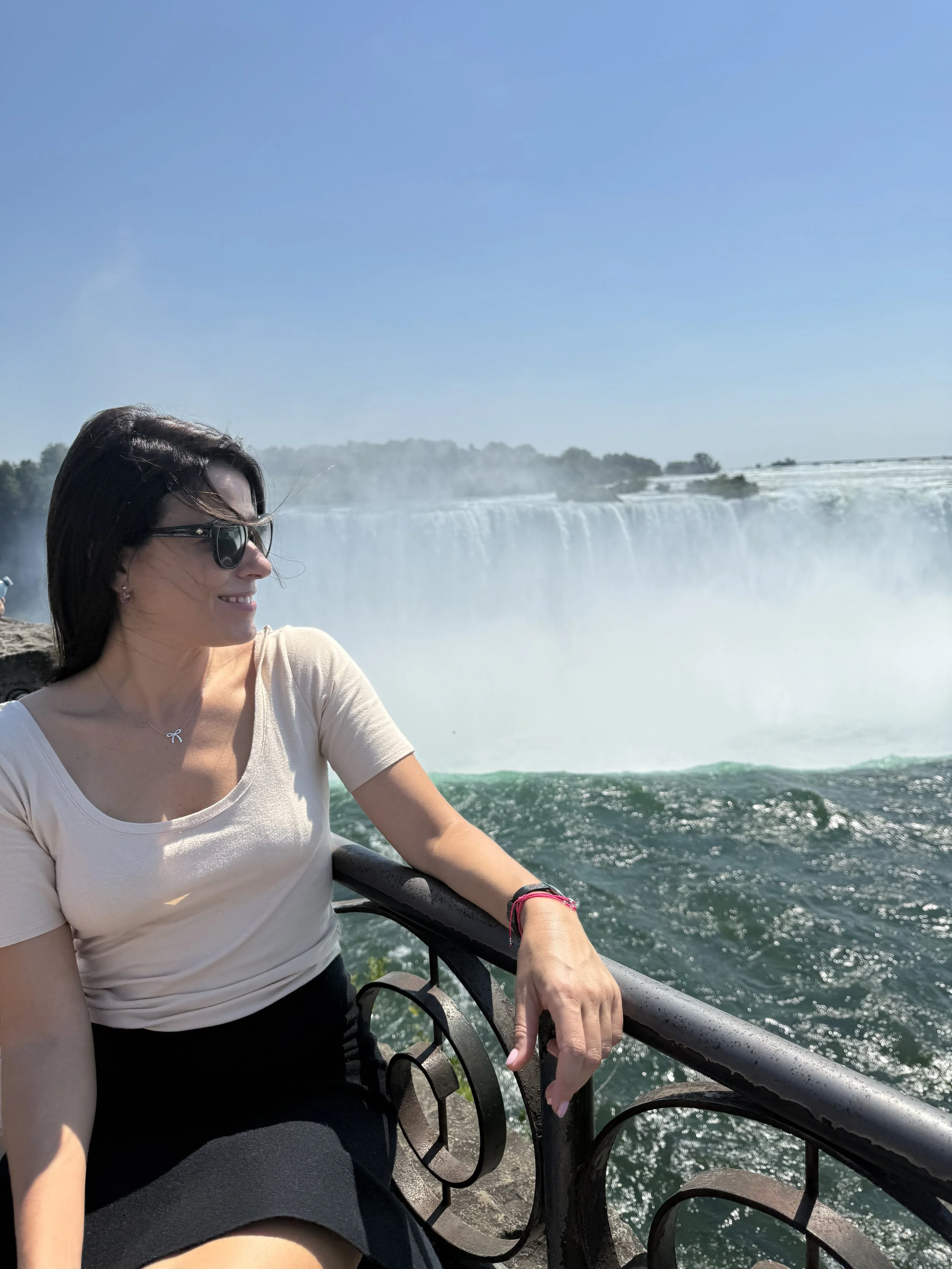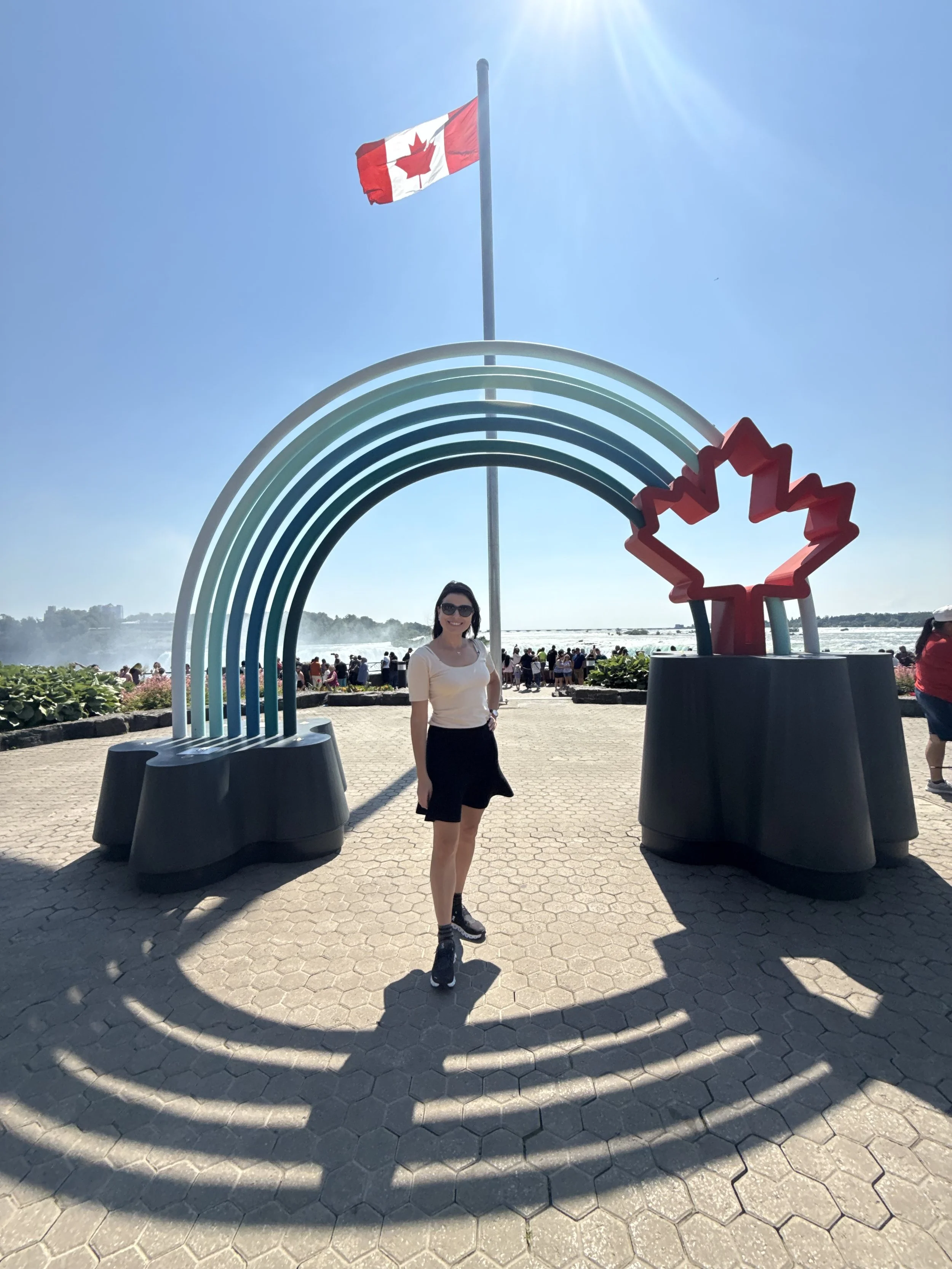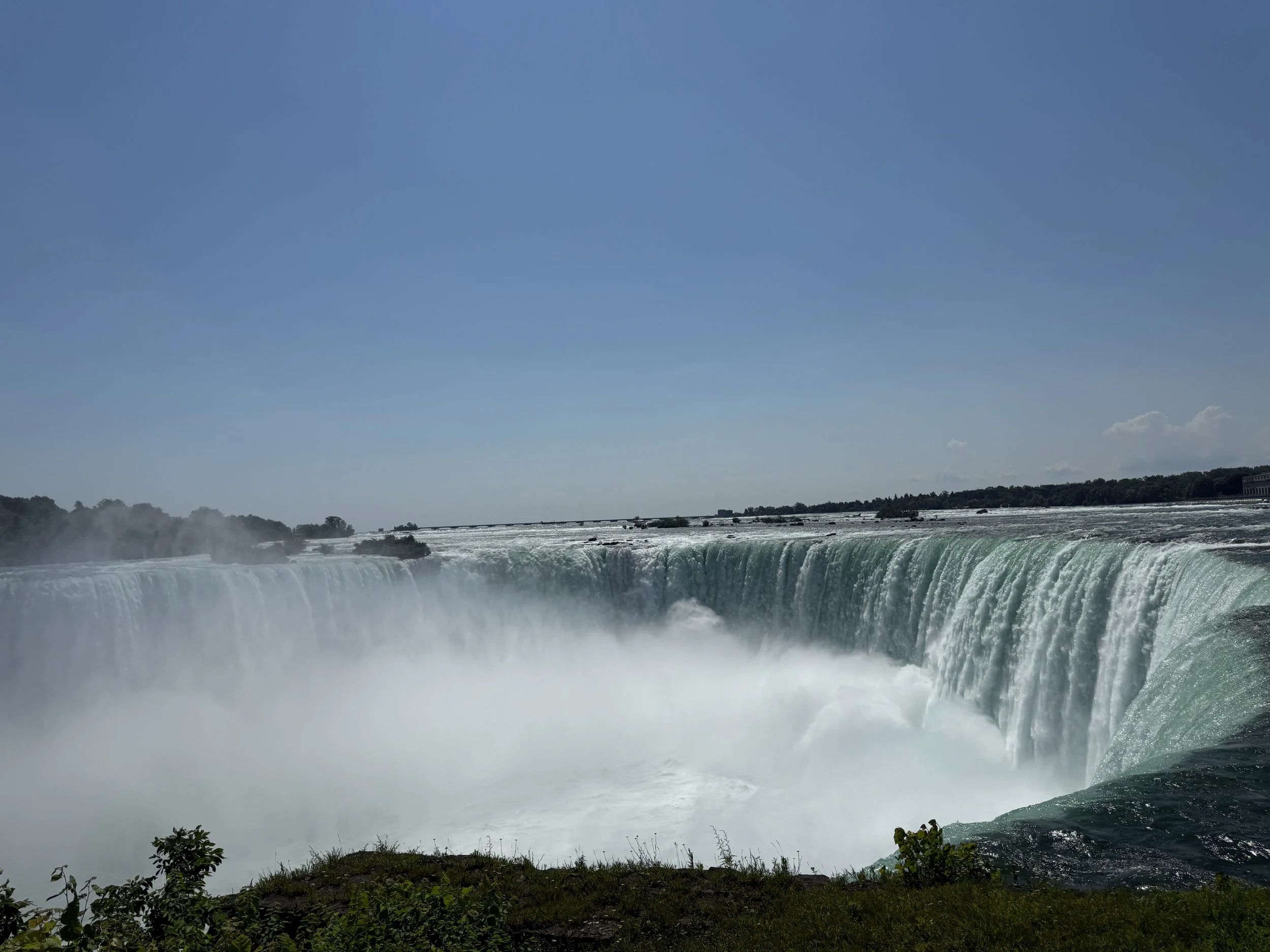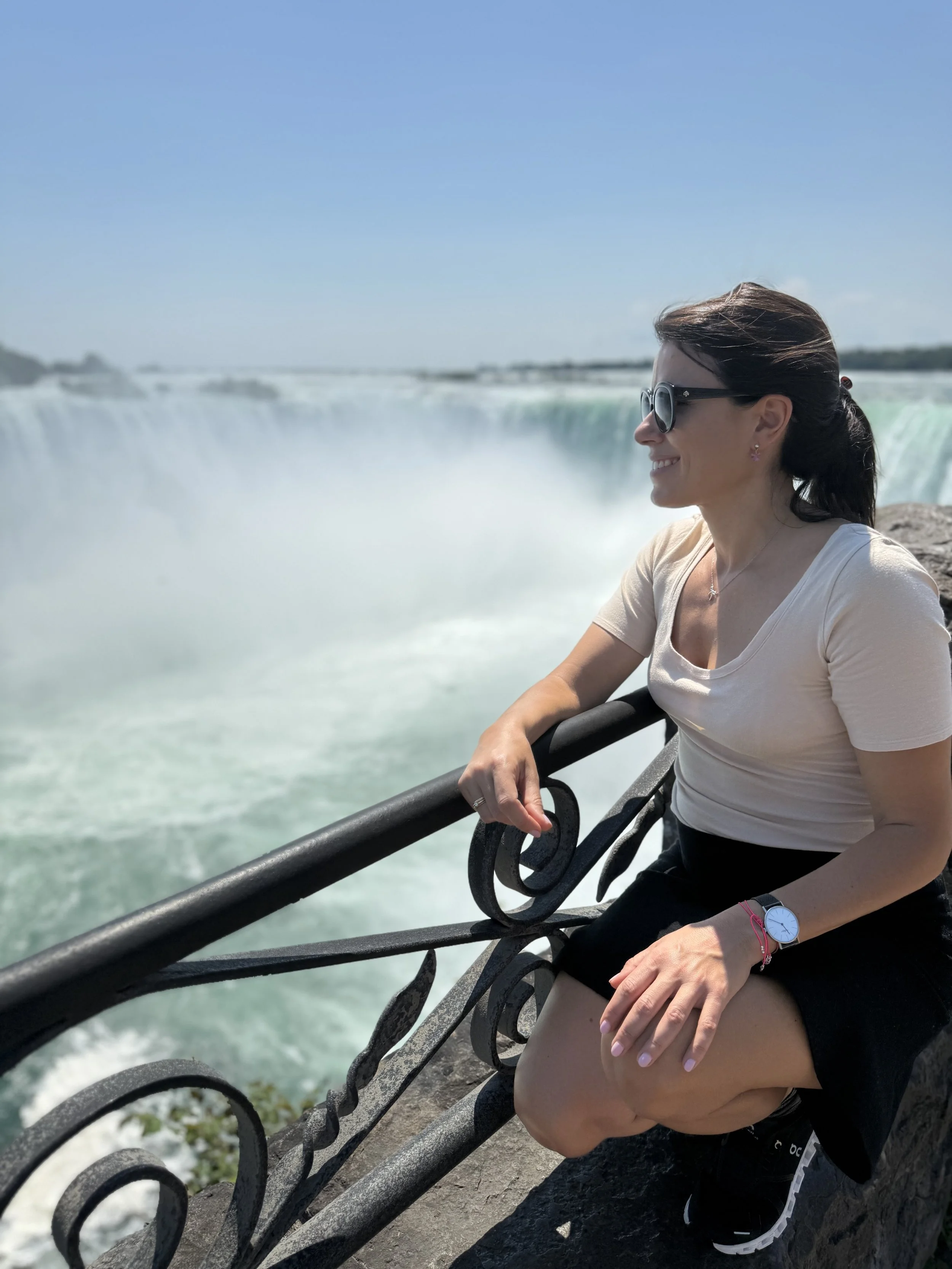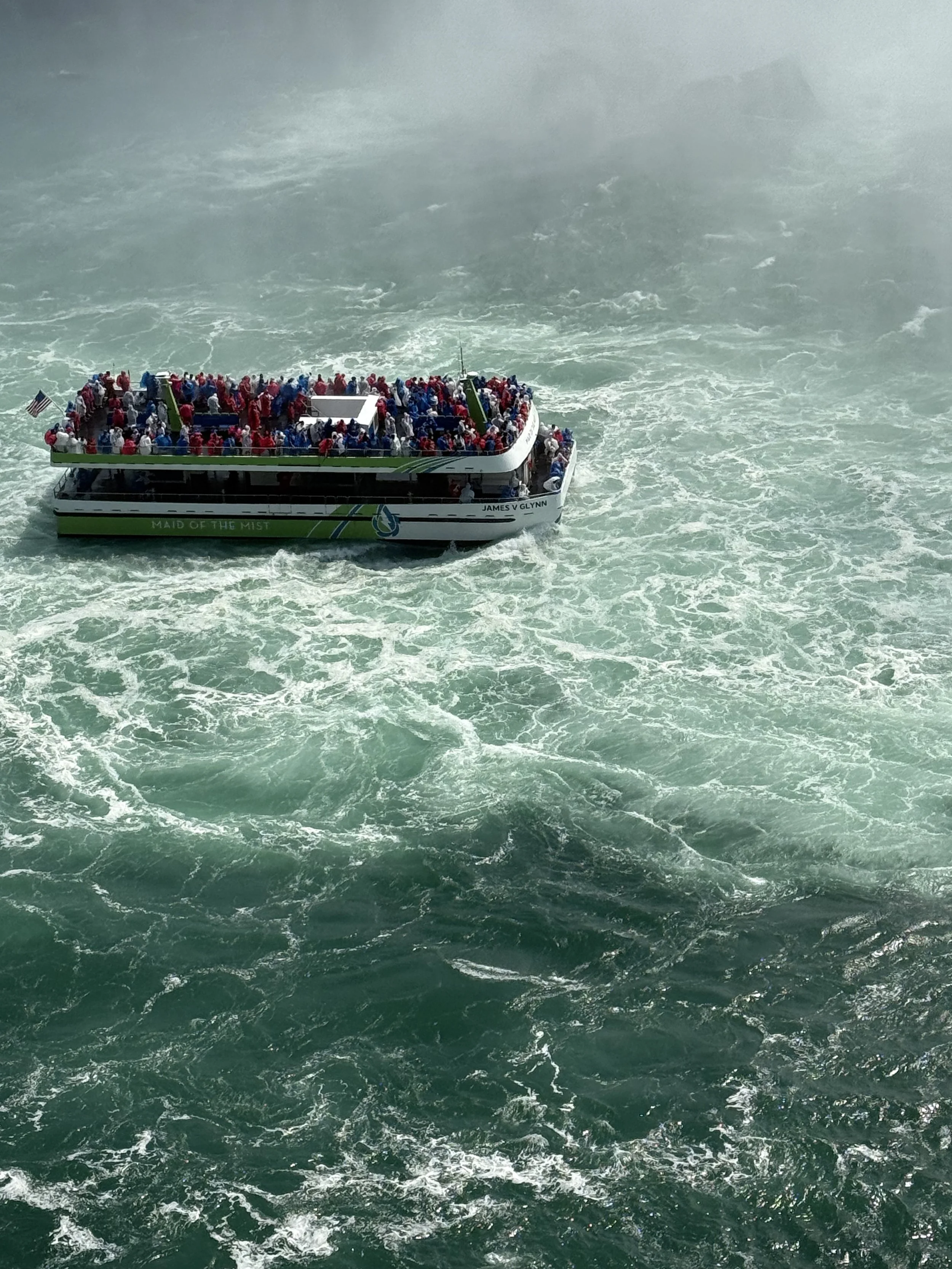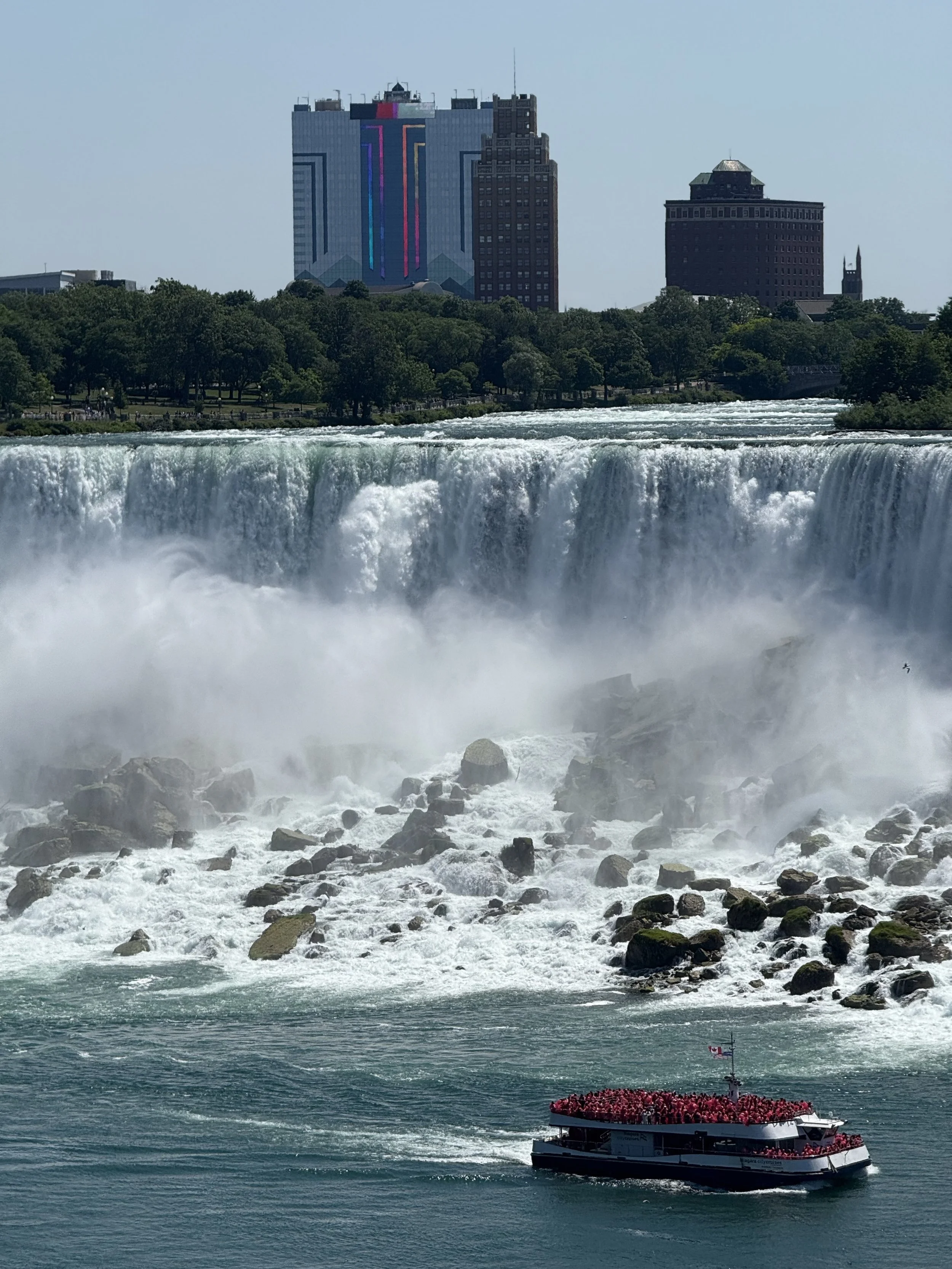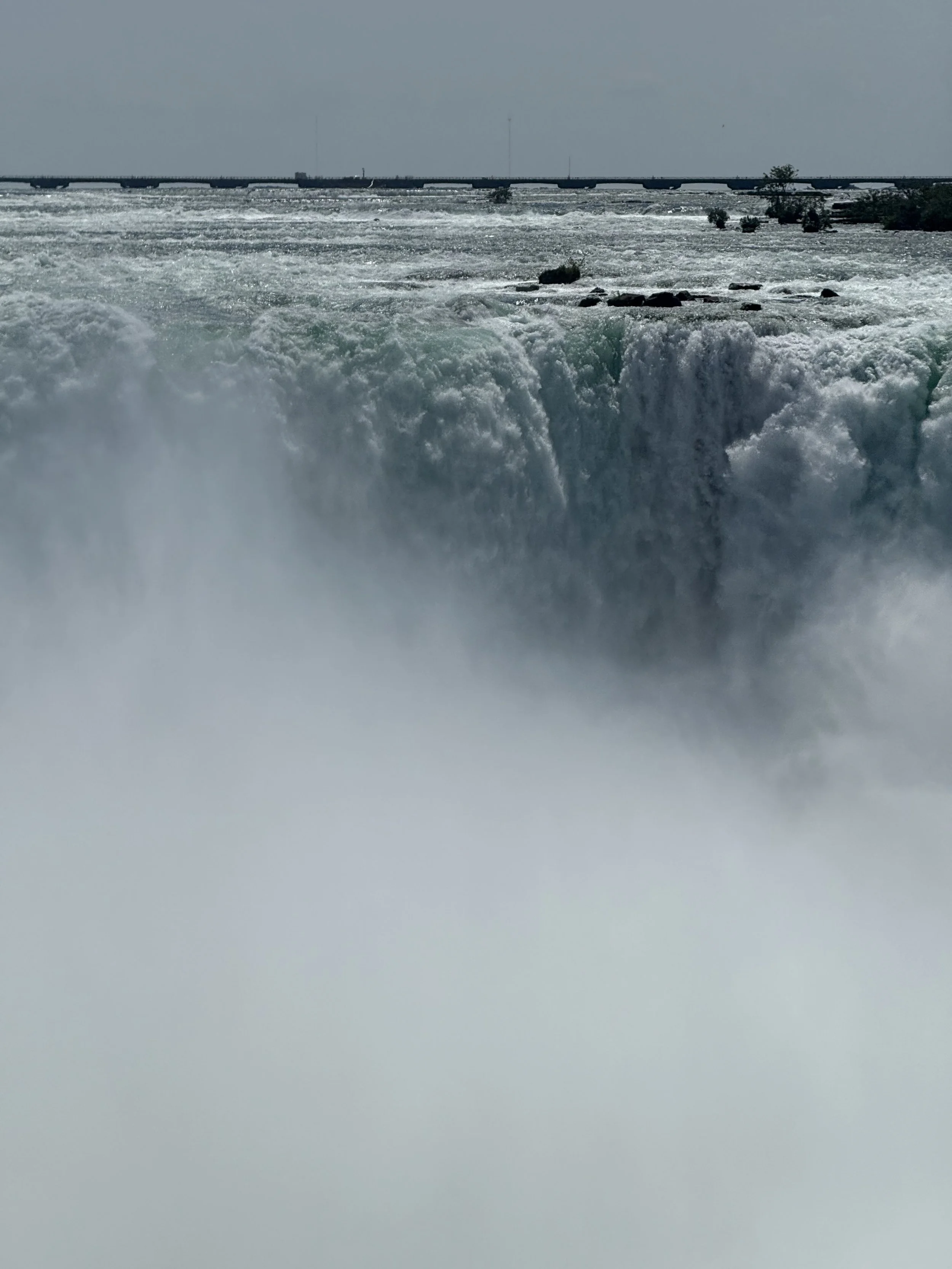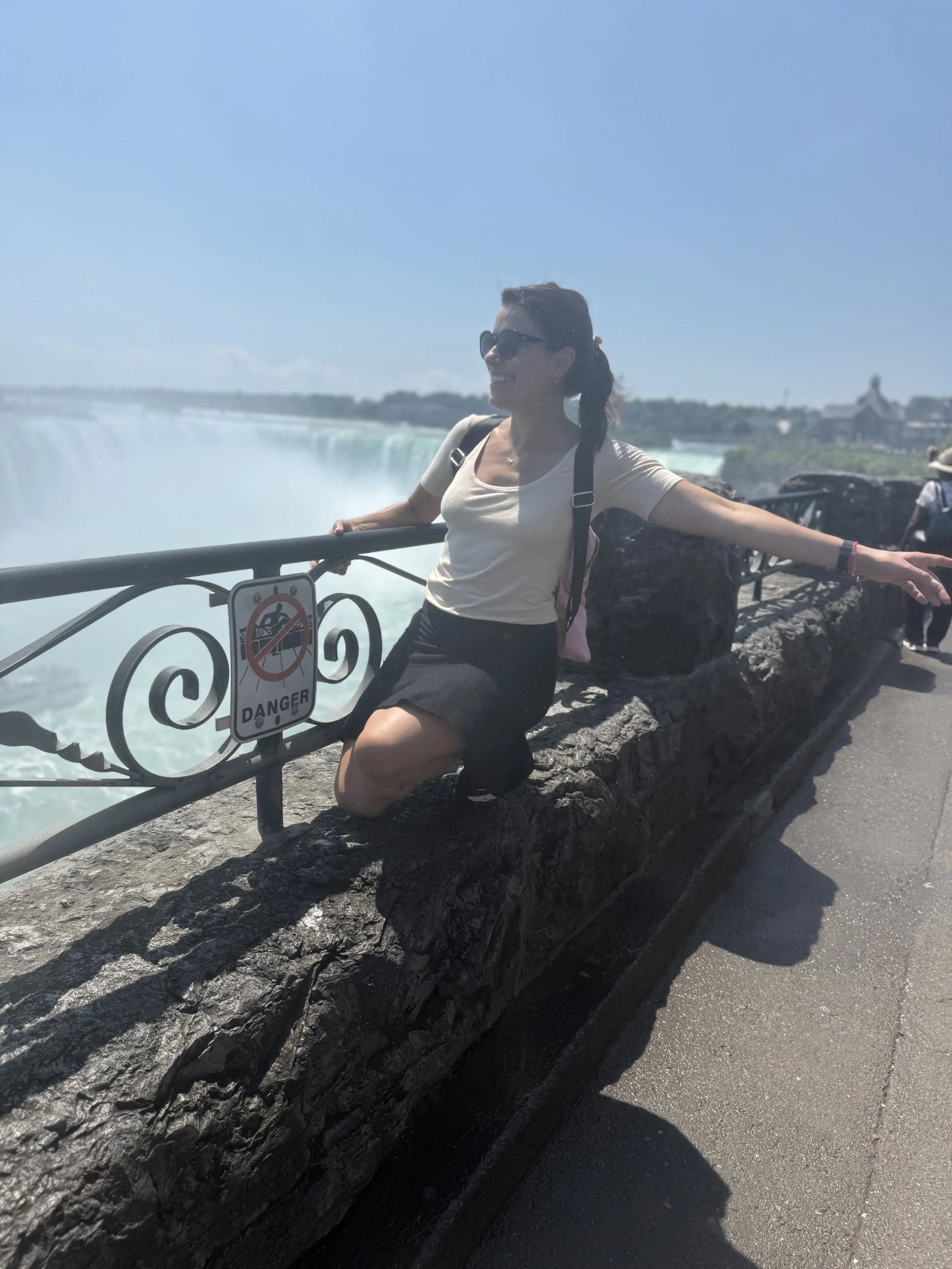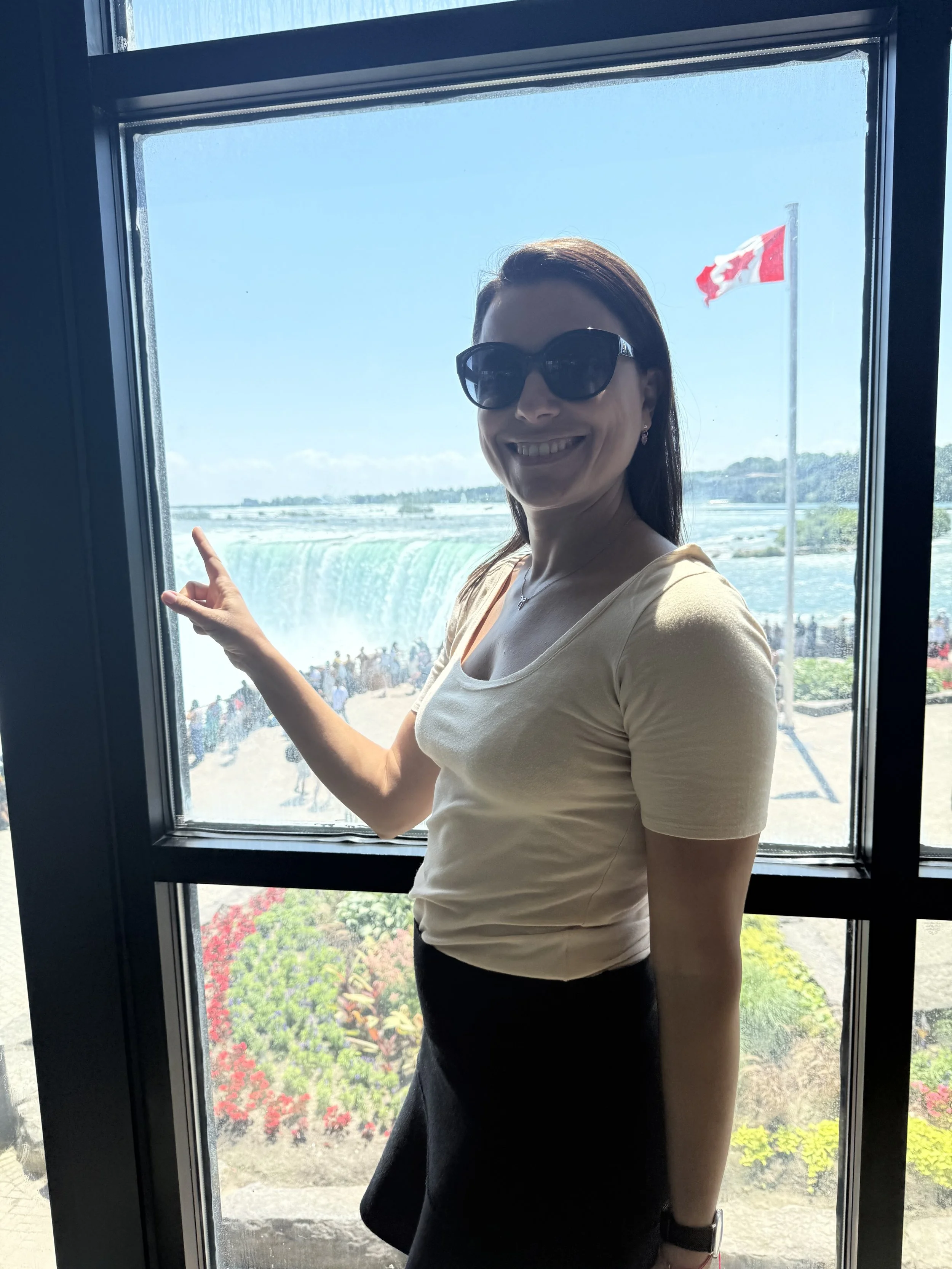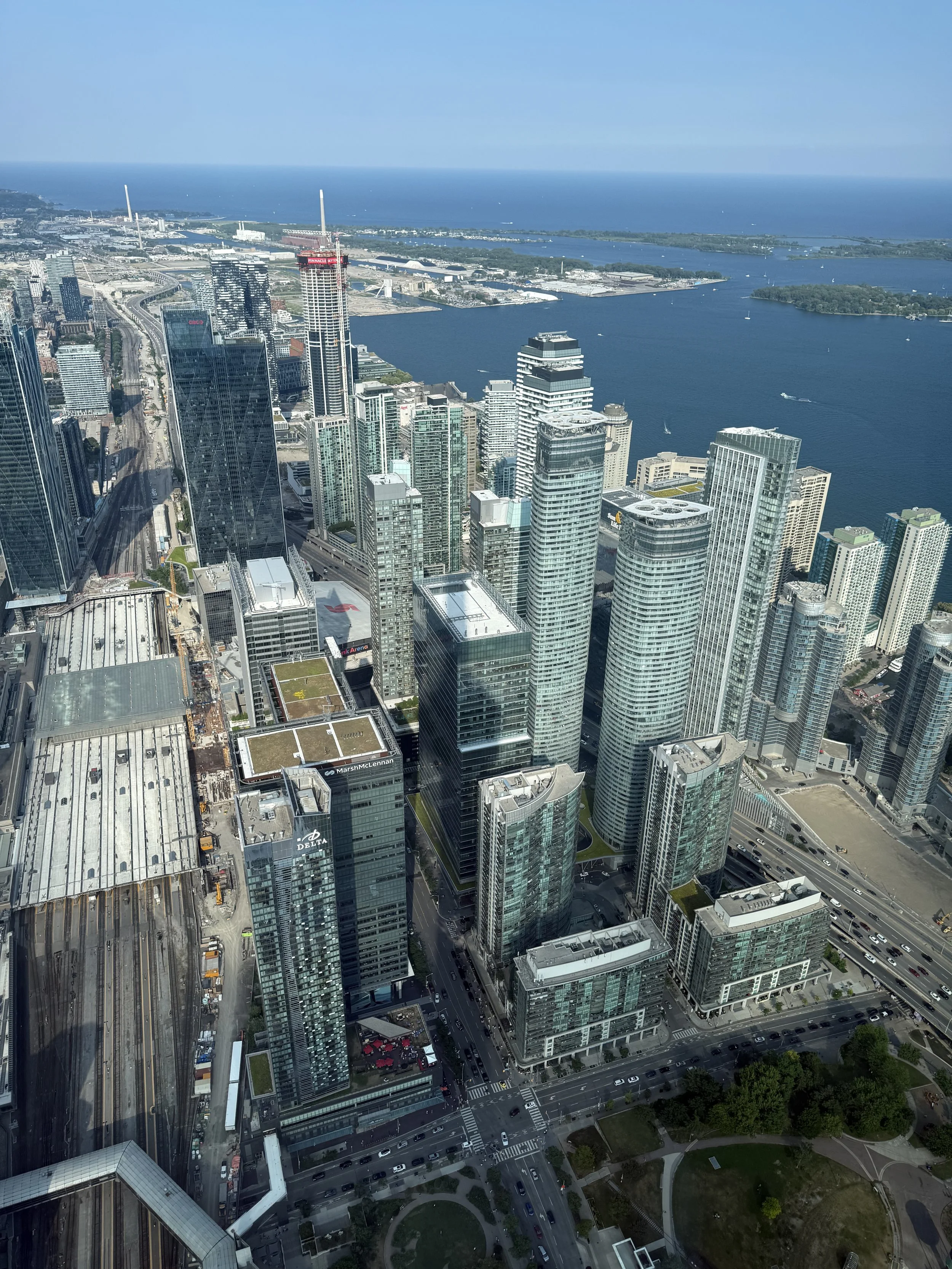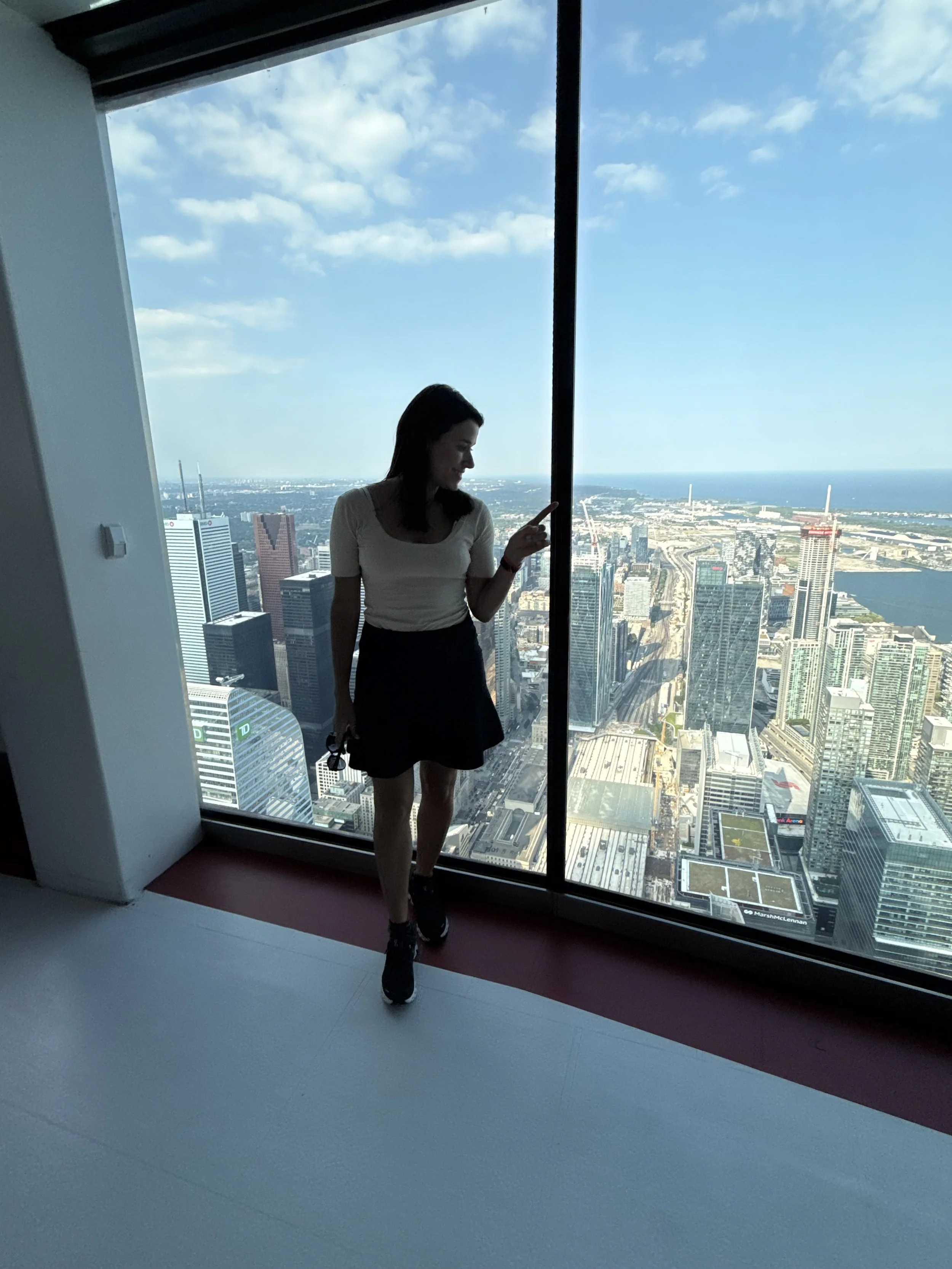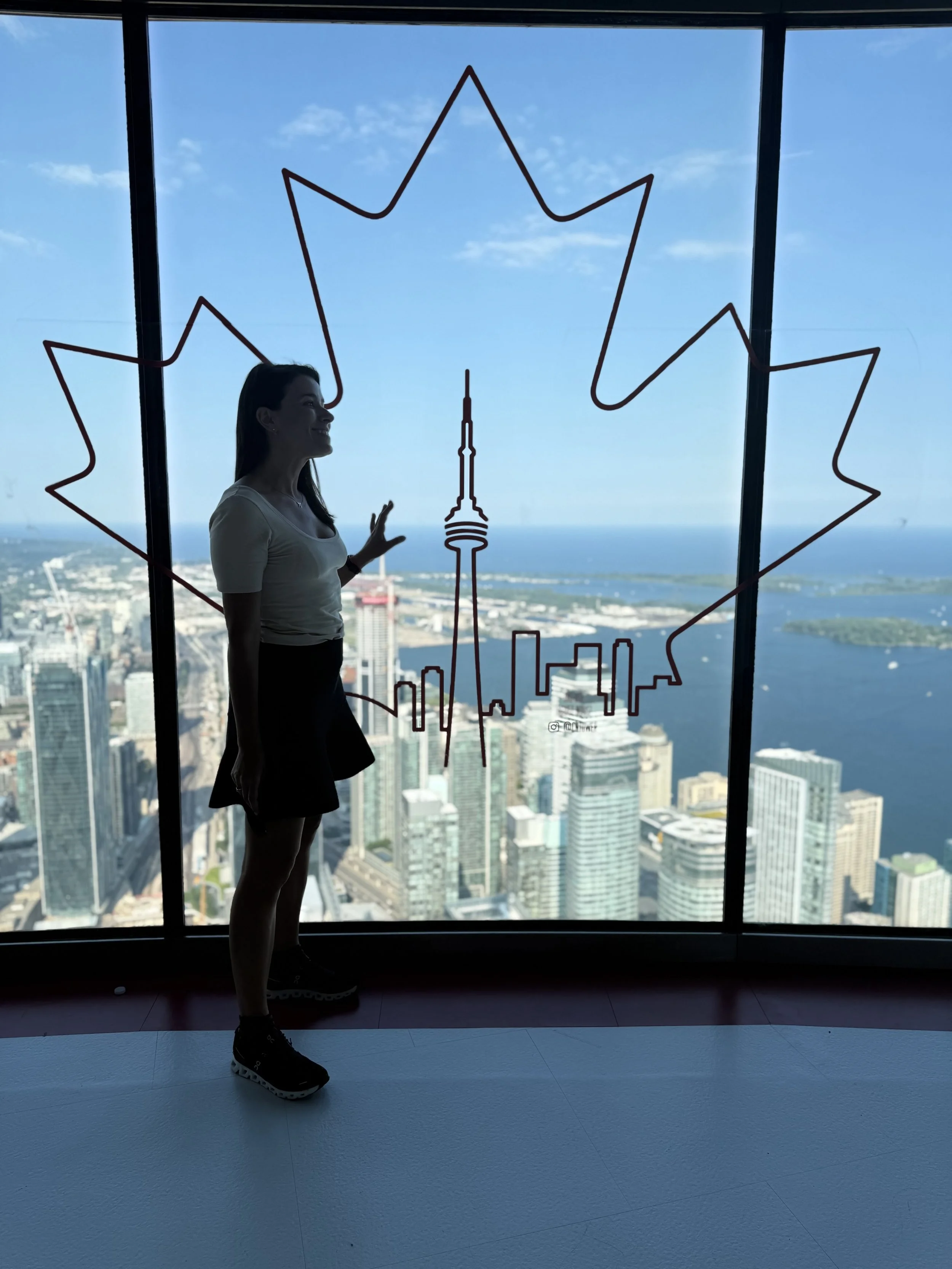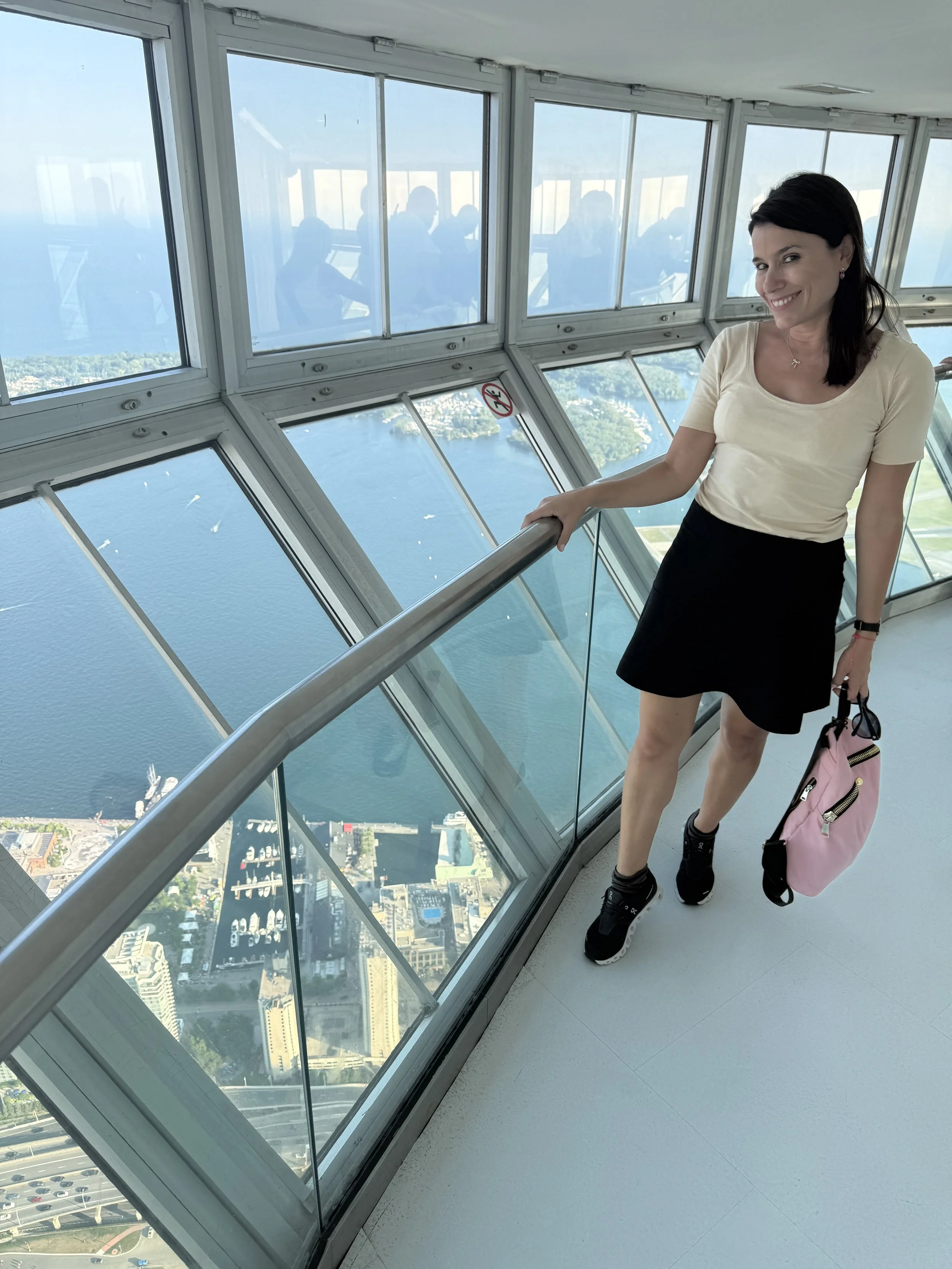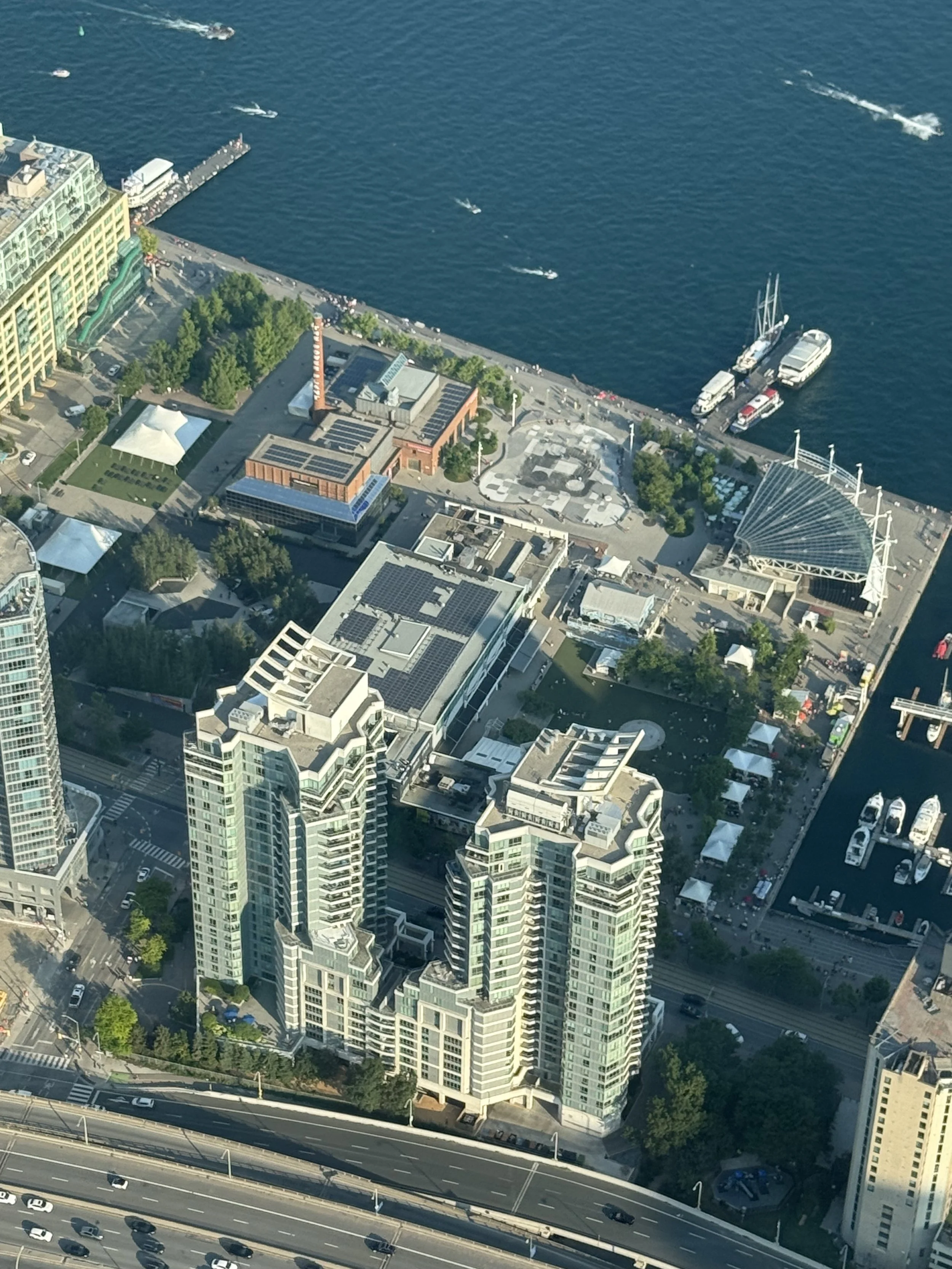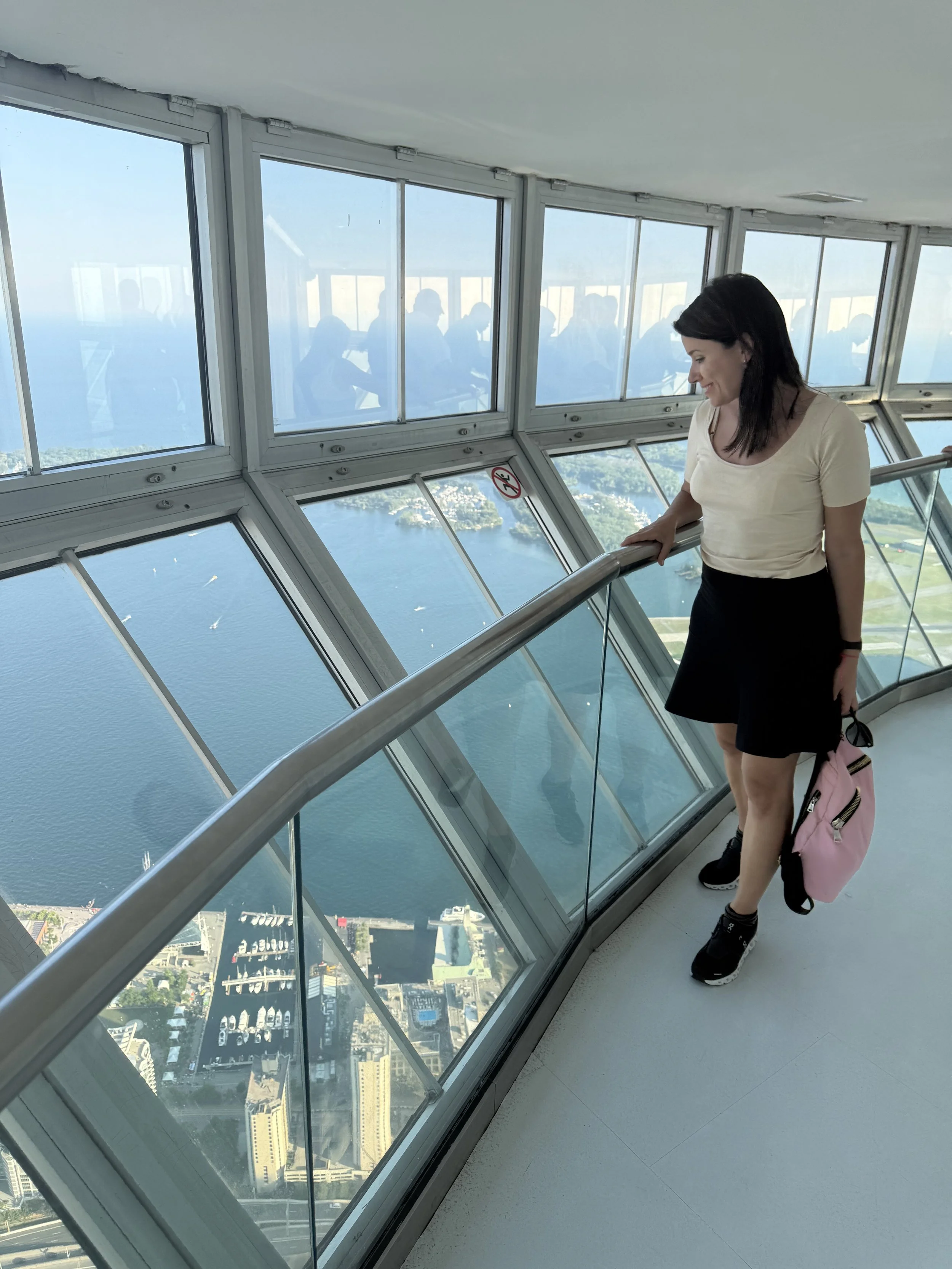Toronto
Our favorite Canadian cityToronto derives from an indigenous word meaning “abundance.” Today, it is Canada's most important city in terms of economy, culture, and sports. It is even more cosmopolitan than Vancouver: 50% of its inhabitants were born outside Canada, and the 911 emergency number has operators who speak 160 languages. In terms of gastronomy, this is reflected in its twenty Michelin-starred restaurants. Its center was lost in 1904 due to a monumental fire caused by a defective stove. In 1954, it suffered serious losses again due to a hurricane.
Due to its urban planning policy, which seeks to reduce costs, it has more than 2,000 buildings with more than six floors.
We arrived in Toronto on a flight from super-cool Vancouver that took more than five hours. The modern airport gave us a glimpse of what the city would offer us in terms of modernity and magnificence.
We took a train to Central Station, from where a short walk would take us to the Novotel Toronto.
Before arriving at the hotel, we stopped at the station's food court for a quick Mexican meal, @tripticity_, lfavorite, at Taco Bell in Union Station.
The next morning, very close to the hotel, almost hidden away, we enjoyed Banksy's street art, thanks to the research done by Mr. @tripticity_. The work, entitled Two Men & a Child, is covered with acrylic for protection. Due to its size, the work goes unnoticed.
Then, we walked to St. Lawrence Market, a market dating back to 1814 and once chosen by National Geographic as the best market in the world.
Returning via King St, we headed towards Financial District, lthe area of banks and buffets. Around 100,000 workers arrive at this block every day. There First Canadian Place, stands out, today the tallest building in the country. There are many entrances to The Path, the underground system for winter.
We walked up Yonge St. to Queen St. until we came across The Great Library at the Law Society of Ontario, Behind it is City Hall, the municipal headquarters from 1965, built right next to the previous headquarters designed by architect EJ Lennox. It is so distinctive that it is featured on the Toronto flag. The east tower has 27 floors and is 100 meters high, while the west tower has 20 floors and is 80 meters high. The towers embrace what would be a City Council. The fountain in Nathan Phillips Square is used as a skating rink in winter. Next door is the Eaton Centre, a large shopping mall.
From there, we moved on to the famous corner of Yonge St. y Dundas St. This is Toronto's iconic corner, where Yonge is 86 km long and Dundas, perhaps the longest street in the world, is 200 km long. We were cautious there because there are many homeless people and some certain delinquency.
Nearby is Uncle Tetsu’s, a well-known Japanese bakery in the city. But we decided to stop at Ahmetzade to enjoy some Turkish sweets, which were simply delicious.
Then we continued our long walk to the area with important museums. On one side is the Gardiner Museum, dedicated to ceramics, with 4,000 historical pieces of pottery and porcelain. Outside the entrance, the head of American artist Jun Kaneko stands out. Directly opposite is the Royal Ontario Museum, the largest and most visited museum in Canada. It has forty galleries with 18 million pieces. It covers paleontology, archaeology, zoology, design, and visual arts. Adjacent to it is a planetarium. Its exterior features a renovation by Polish architect Daniel Libeskind, including the controversial Crystal by Michael Lee Chin, a local investor who donated $30 million to the renovation, on Bloor St.
Just a few blocks away is Bata Shoe Museum, dedicated to footwear. It is named after Sonia Bata, who was the wife of Thomas, the owner of Bata Shoes Corporation. It has 15,000 shoes, some dating back to 2000 BC.
From there, one option was to take transportation to Casa Loma, the mansion built by Henry Pellatt, a local millionaire, between 1911 and 1914, designed by architect Edward Lennox, the same architect who designed Old City Hall. It had 98 rooms, an elevator, a giant oven, and two secret passages from Pellatt's suite. There are legends of ghosts and paranormal phenomena. Today, it is a museum of antique objects and serves as a set for movies and TV series. One block away are the Stables, a museum of cars and carriages. There is also Spadina House, Casa Spadina, an example of what was once Toronto's wealthiest neighborhood.
From there, we took the subway to Harbour St. We wanted to see another iconic work by Banksy. It is located on the second floor of the Second City, very close to the York & Gardiner escalators: it is Guard with Ballon Dog. During his time in Toronto, Banksy left about seven works, but only two survived.
When we left, we headed to Jack Layton Ferry Terminal. We arrived just in time to board the ferry to Centre Island.
From the island, you get a tremendous panoramic view of the city skyline.
We bought round-trip tickets. As in all Canadian cities, summer is enjoyed intensely by everyone, locals and tourists alike.
After enjoying the beautiful sunset, we walked back to the hotel, ending a marathon day.
The next day, we had a walk through the Historic District, Queen St., and the AGO gallery.
We decided to buy the Day Pass because we knew in advance that we would use at least four trips on the city's public transportation.
We walked from the hotel to the Distillery Historic District, zan area of shops, cult stores, and entertainment that emerged about twenty years ago from the recycling of an old distillery. Very cool. There are also several art galleries, such as Craft Ontario, Arta, Thompson, and Corkin.
When we left, we took an Uber to AGO.
The Art Gallery de Ontario Ontario building was renovated in 2004 by Frank Gehry, who was born in Toronto. It was his first job in Canada. It has an important art collection, highlighting the works of Emily Carr. We also enjoyed an installation by Yayoi Kusama, which is always surprising.
On leaving, we walked towards Queen St. West, the old textile district, chosen by Vogue as one of the three coolest neighborhoods in the world for its design, clothing, and independent and street art venues, as well as its cosmopolitan cuisine.
At the corner of Spadina and Richmond, Uniform Measure/STACK 1997, stands out, a sculpture of a pile of buttons with a large thimble by Canadian artist Stephen Cruise, reminiscent of the textile factory workers of the original neighborhood.
One block back on Richmond, the 401 Richmond cultural center, housed in an old printing press, now hosts shops and exhibitions. You'll also find the Red Head, Abbozzo, and New Museum Toronto galleries. At 408 Queen St, the sculptures of 10 ants stand out.
It was very hot that day, so we stopped at Bahn Mi Boys, , a Vietnamese sandwich shop.
Then we continued to Rush Lane, the first Graffiti Alley, a long alleyway covered in street art. After Portland St., there is a second alleyway.
On our way back to the hotel, we came across a street party at Union Station, . It was great fun to see Canadians enjoying the summer in the streets.
The next day, we took a bus to Niagara Falls to see the famous waterfalls. Buses leave regularly from the bus station behind Union Station, It took almost three hours to get there. We did the whole tour on the Canadian side, without entering US territory.
The most beautiful view is definitely on the Canadian side. Once there, there are many attractions available to visitors, such as taking boats that go very close to the falls or the Journey Behind the Falls, , a viewpoint quite close to the waterfall. There is also a large tourist center with countless food options and souvenir shops.
On the way back, we visited the Torre CN, the telecommunications and tourism center. It is 553 meters high and was the tallest freestanding structure in the world until 2007, when it was surpassed by the Burj Khalifa in Dubai.
The next morning, an early train took us to Ottawa.

